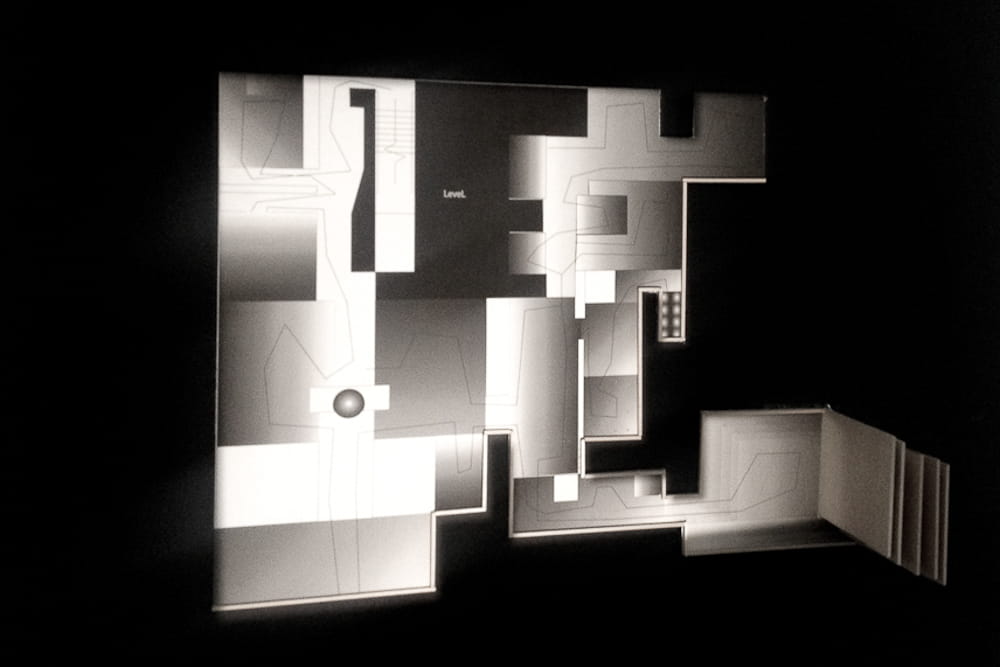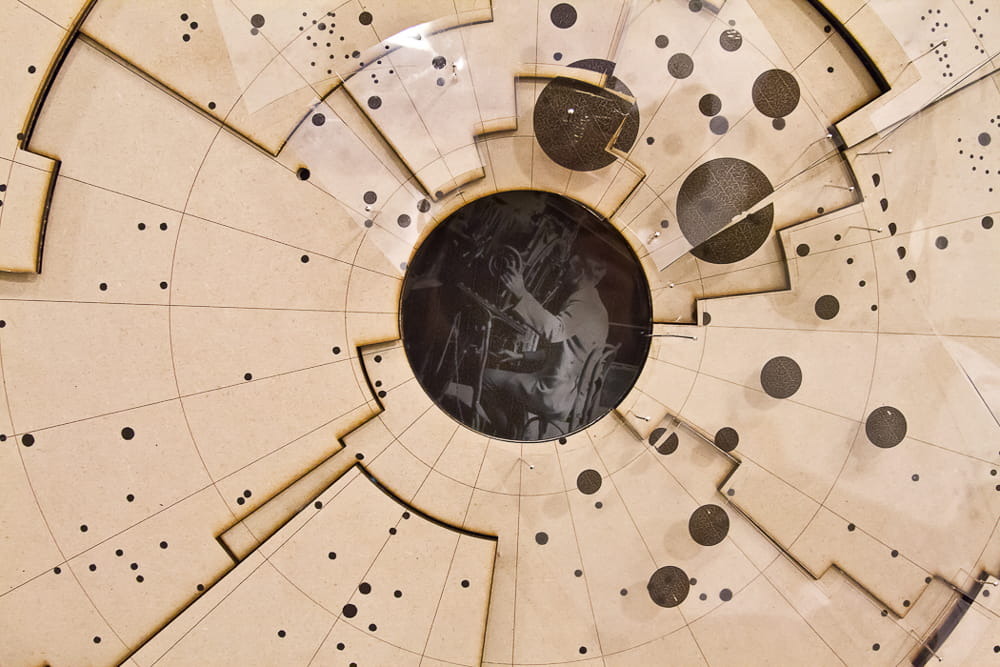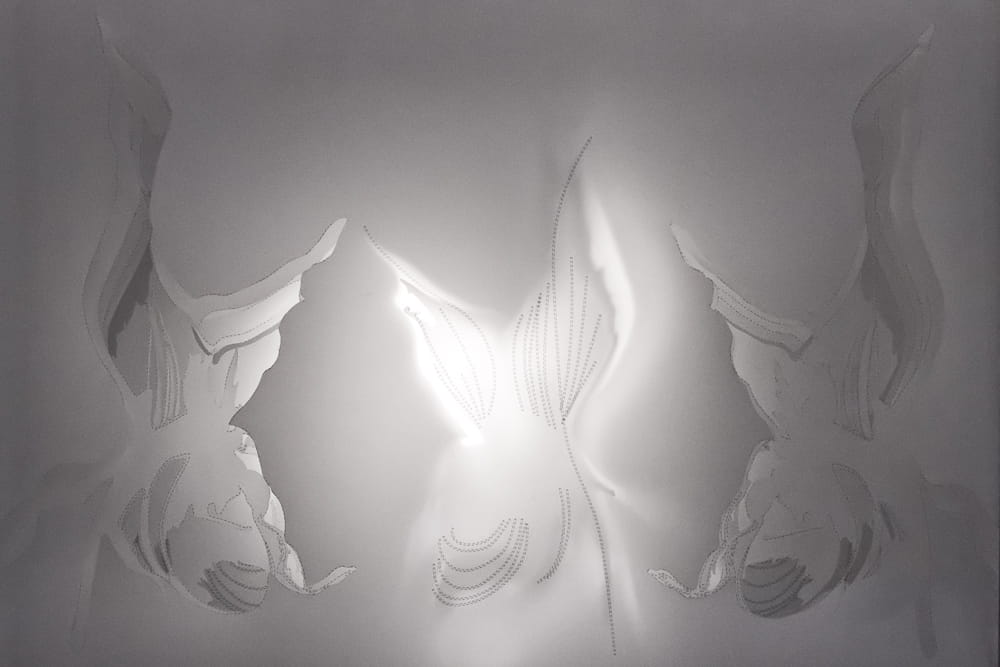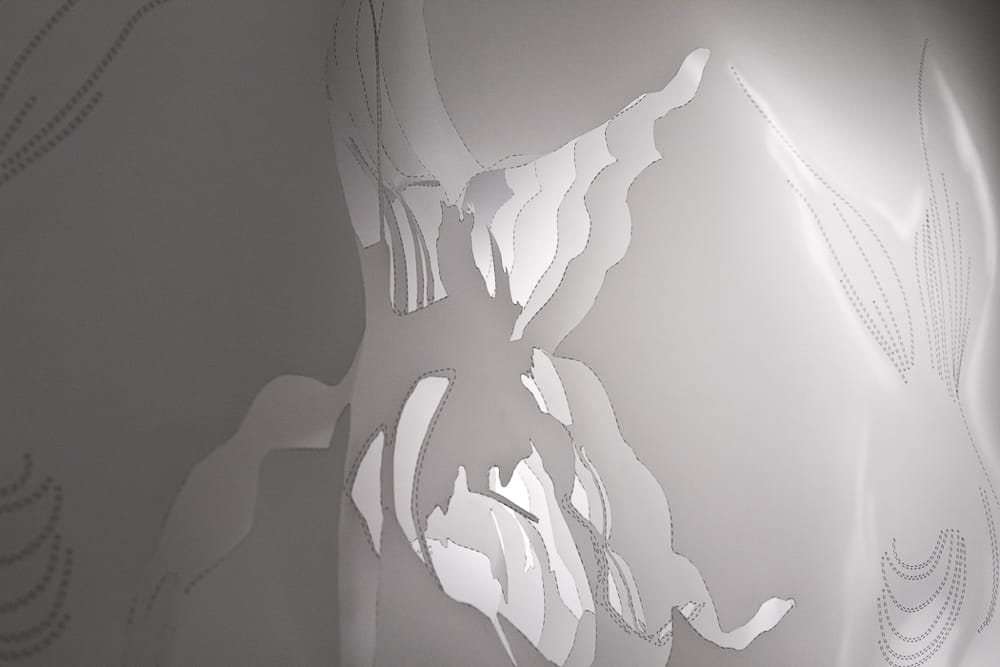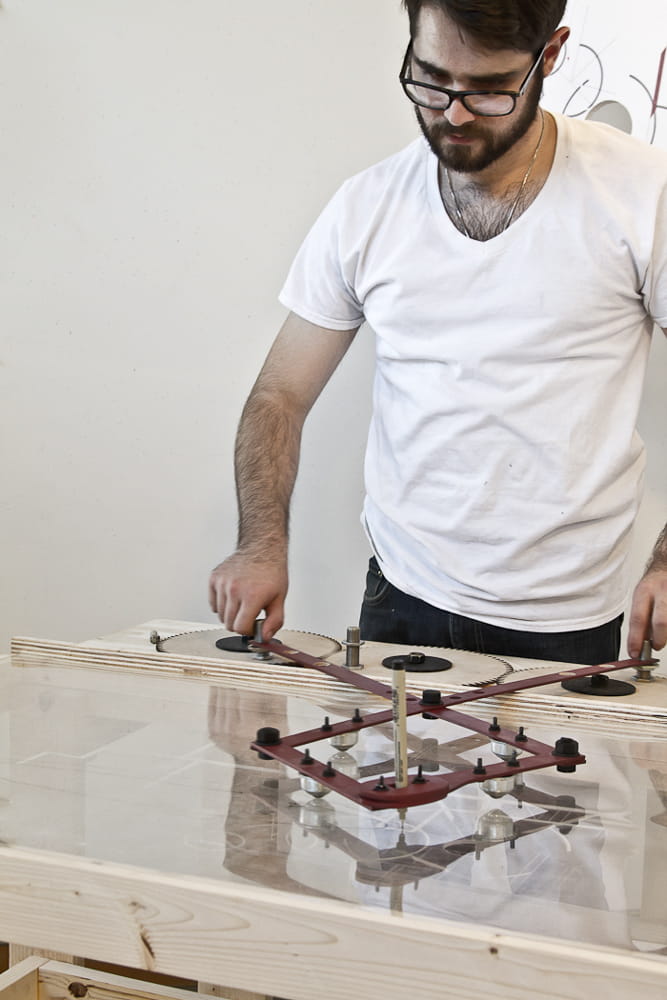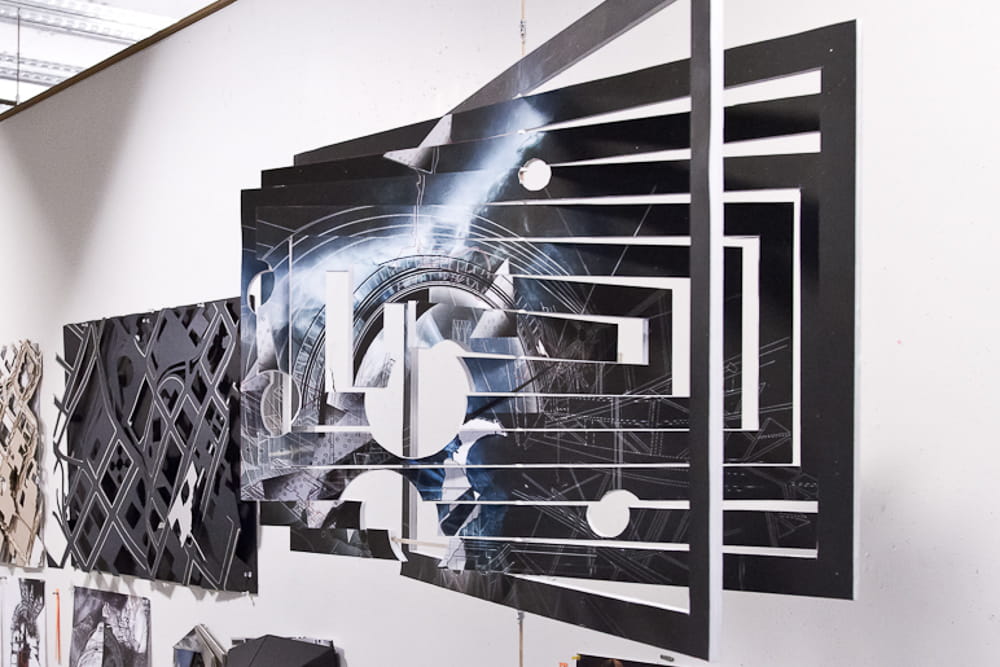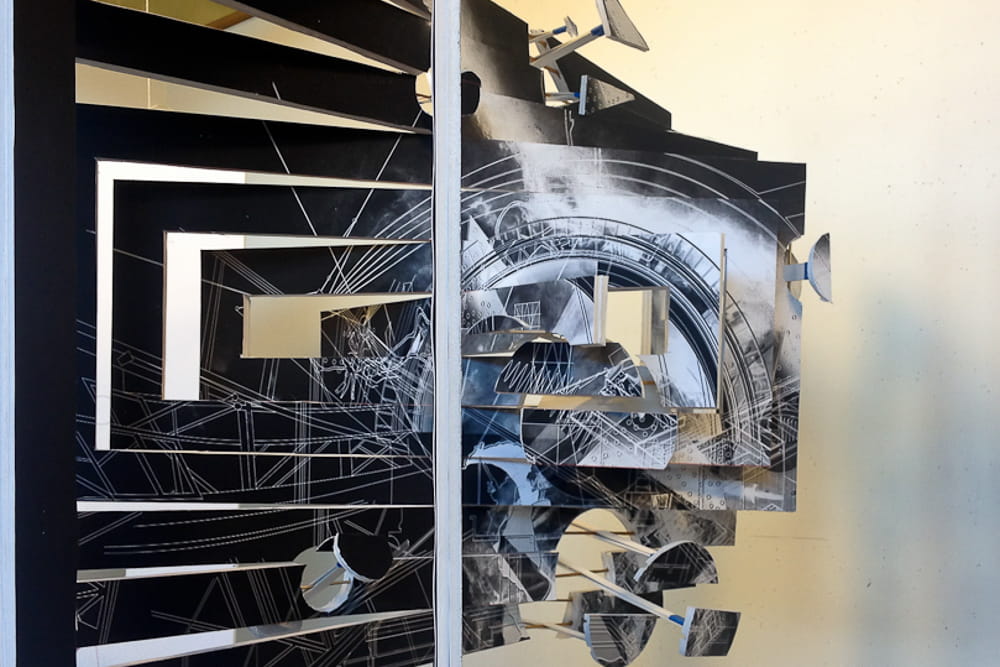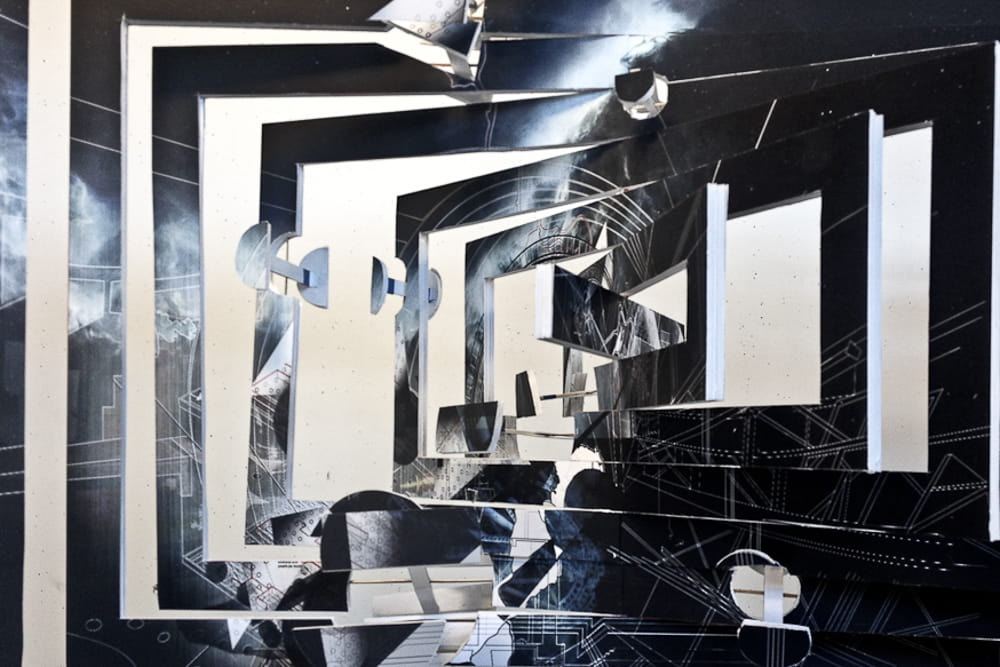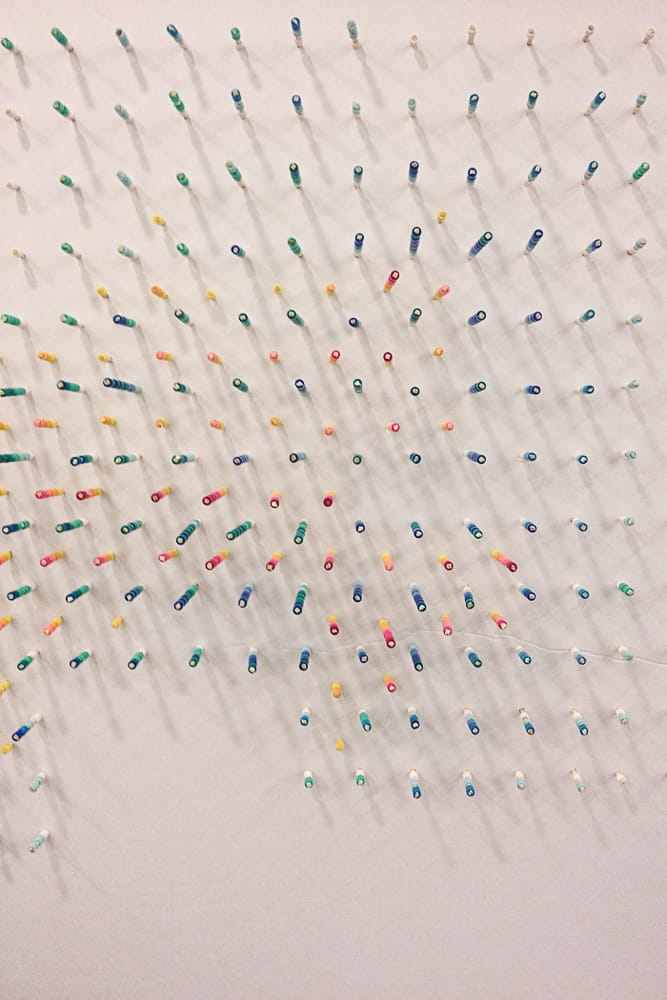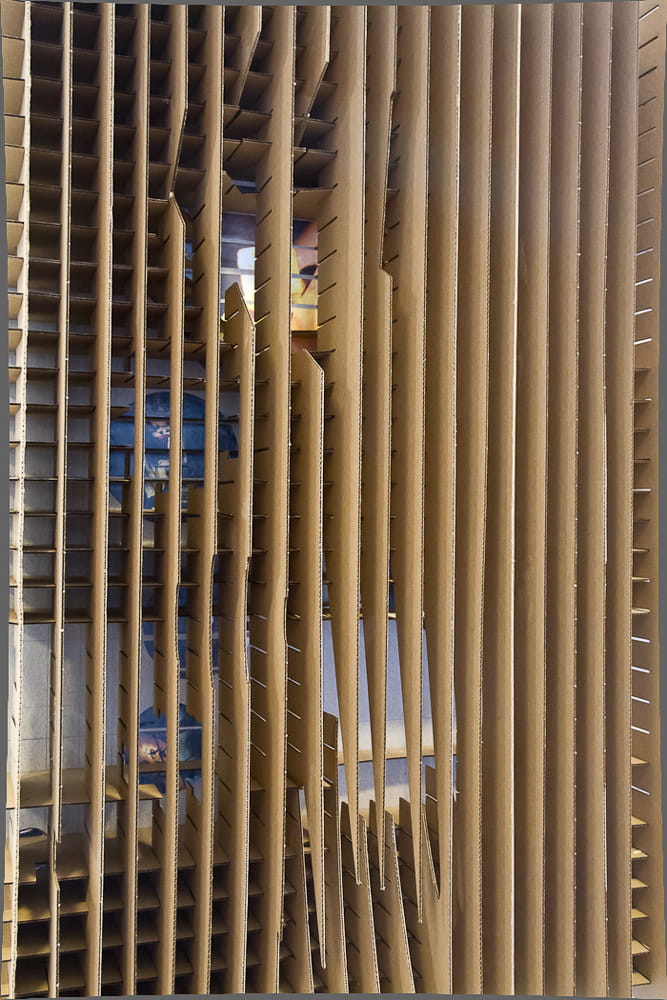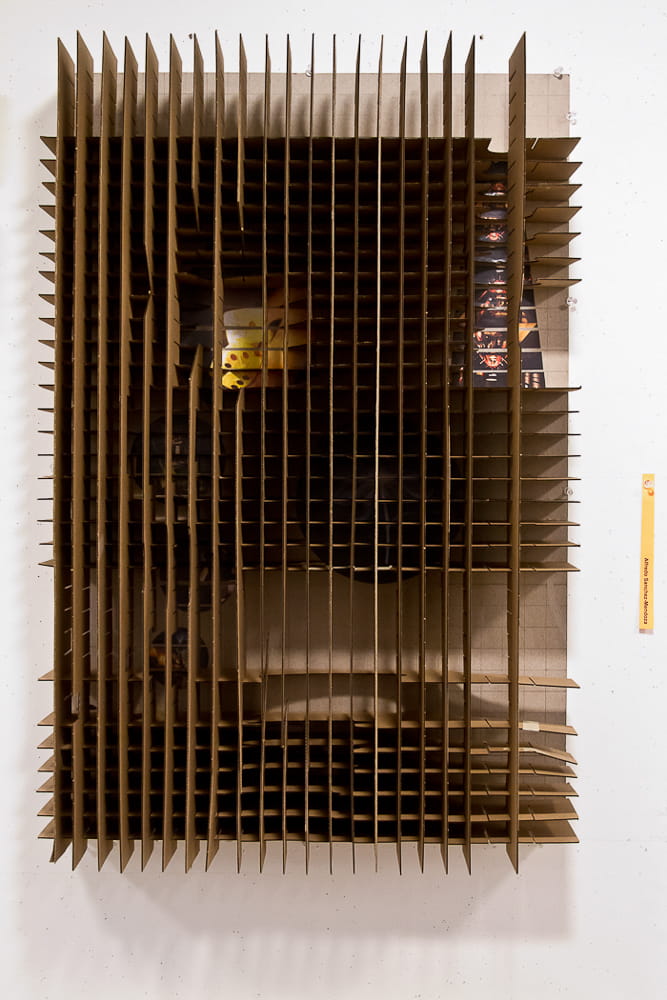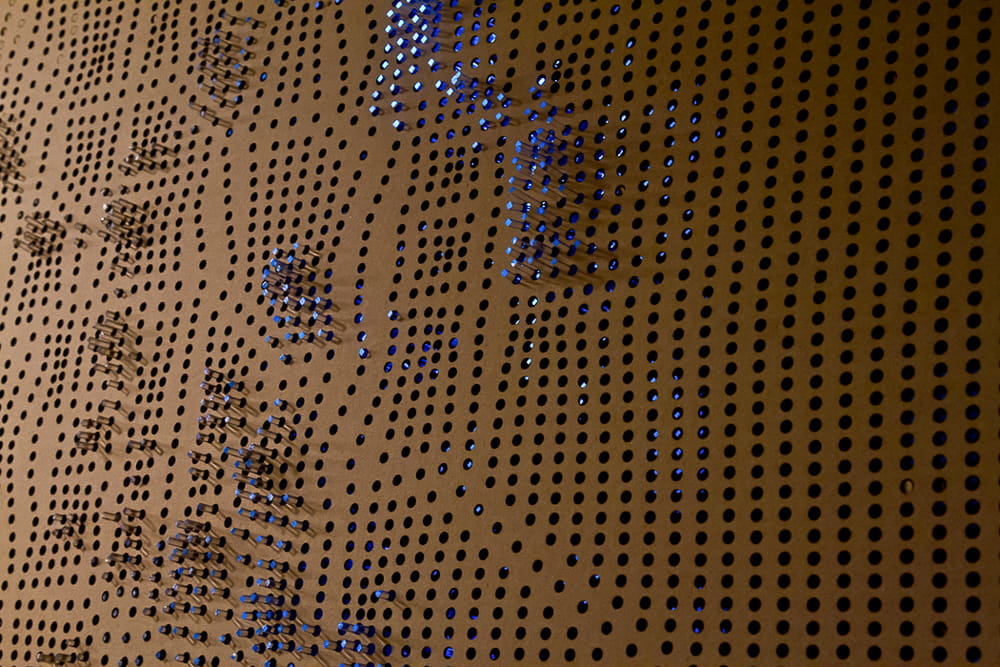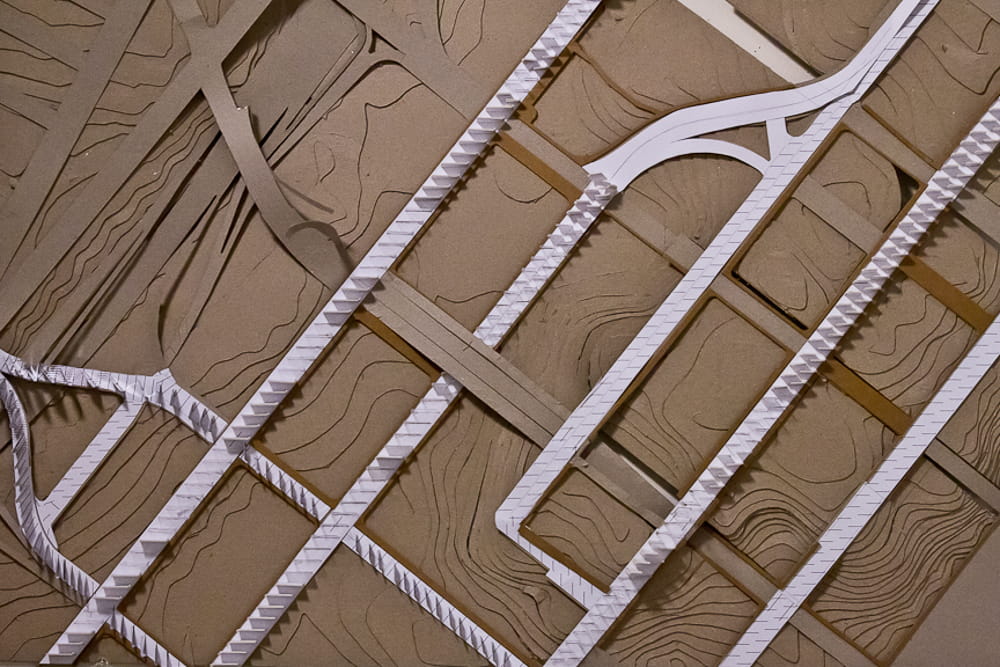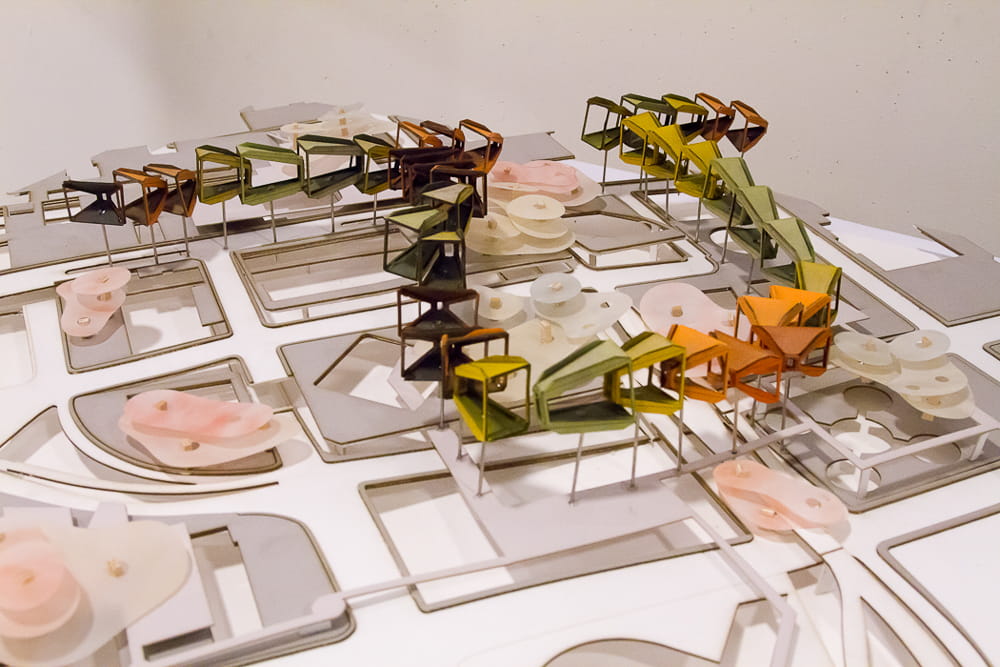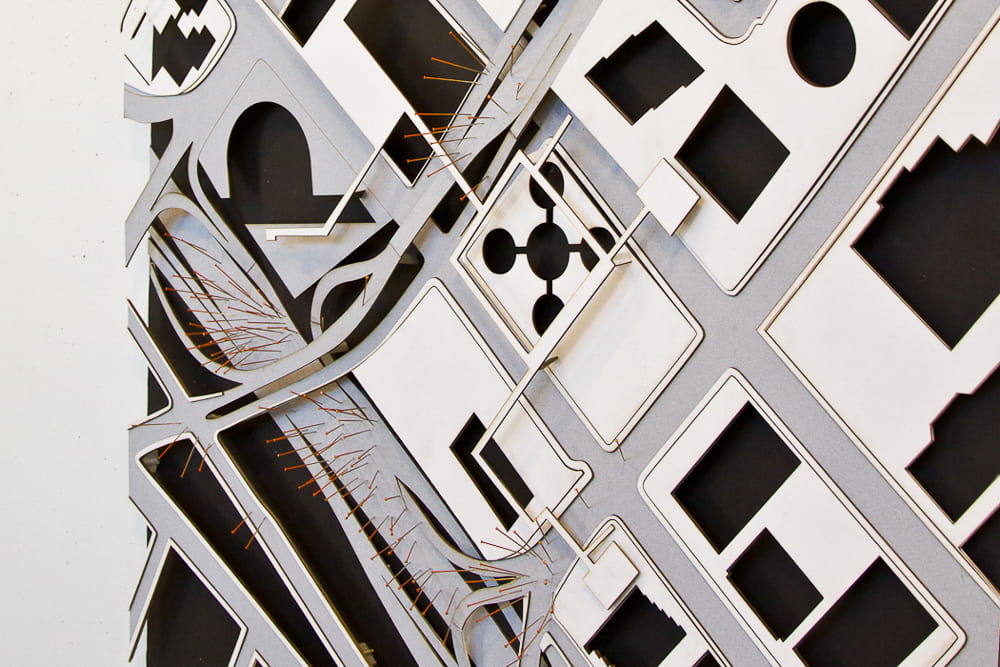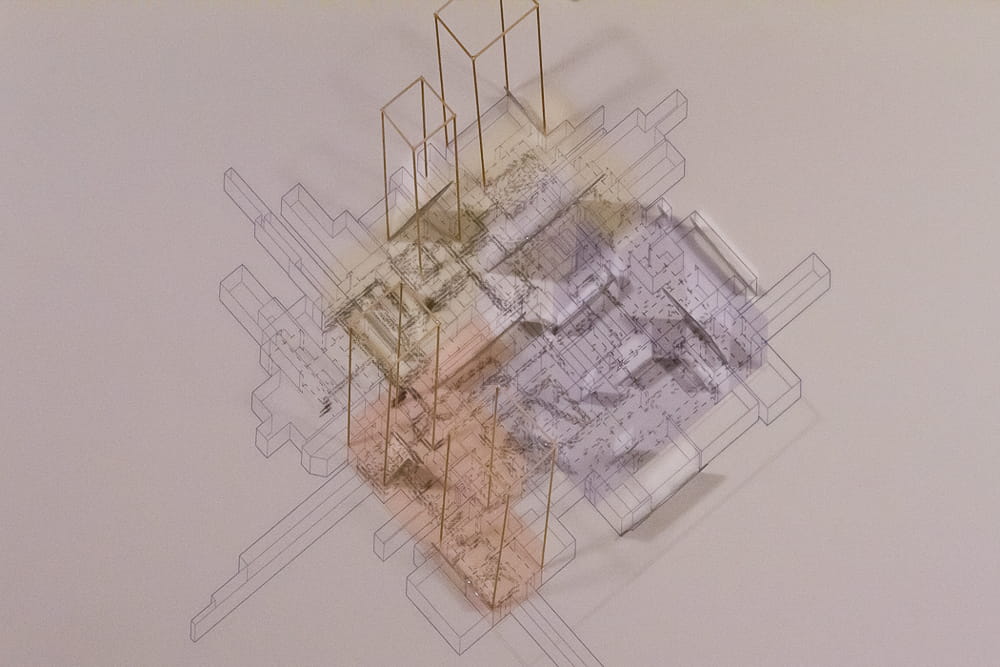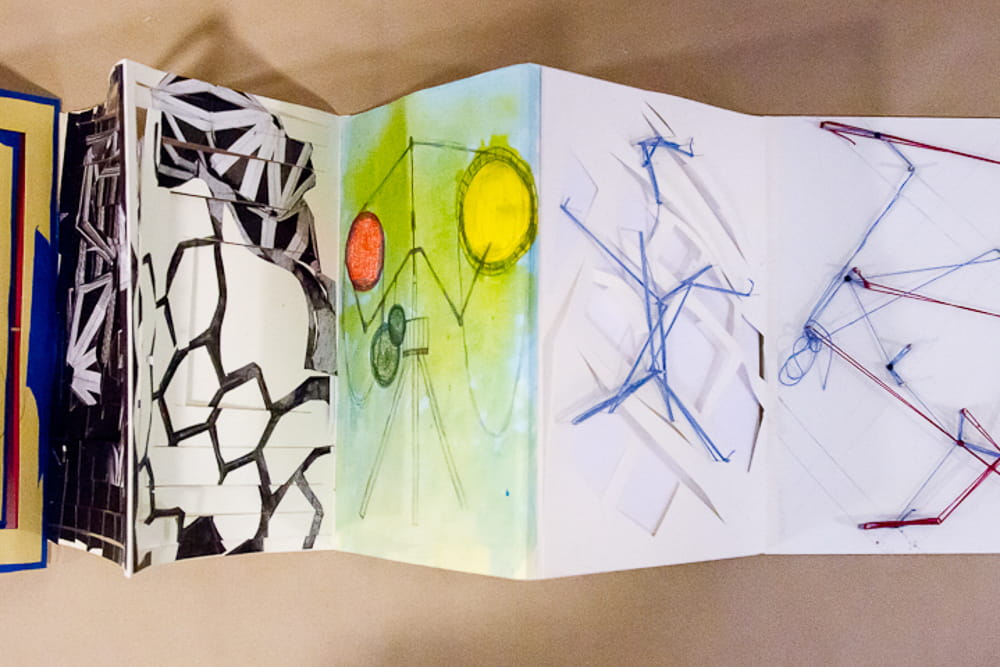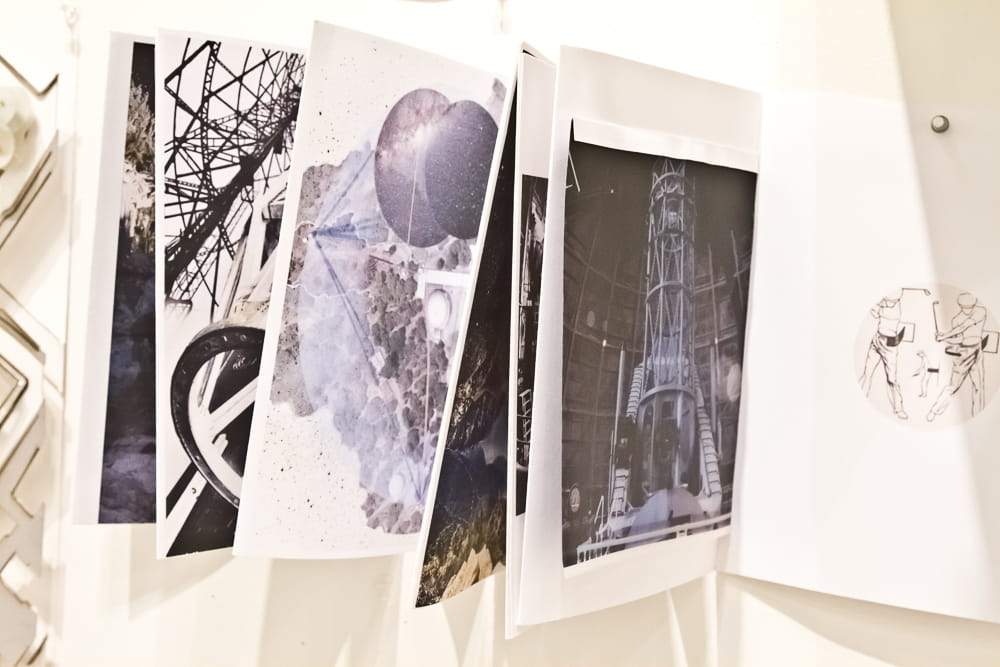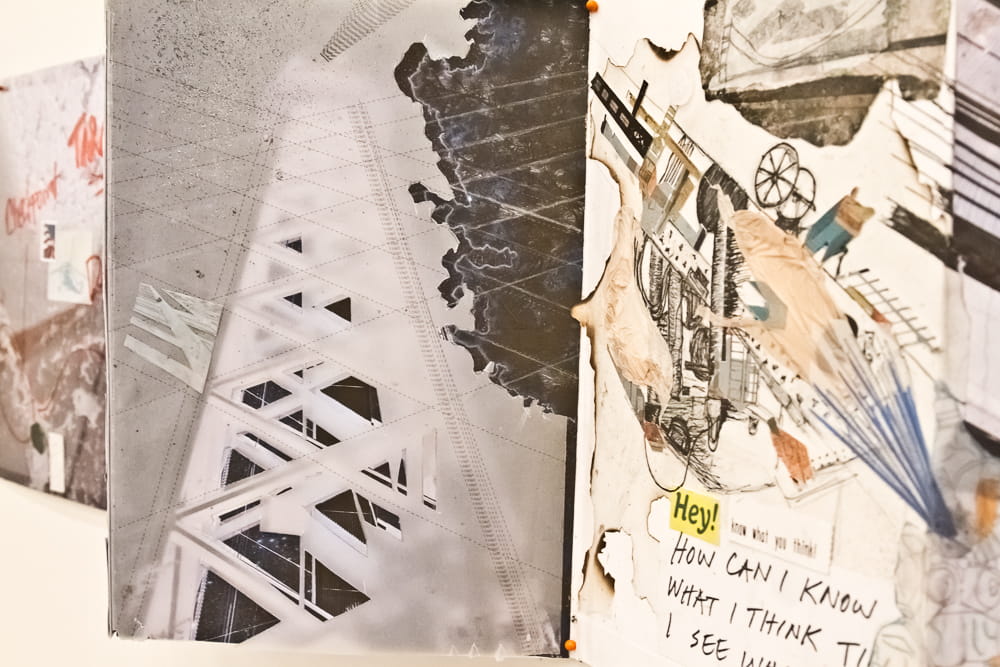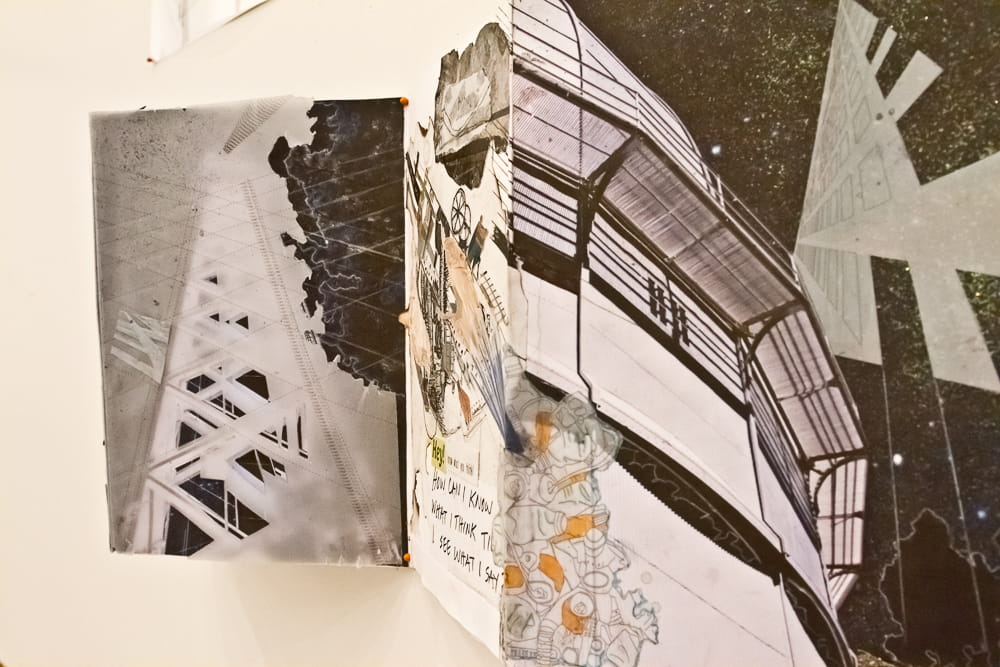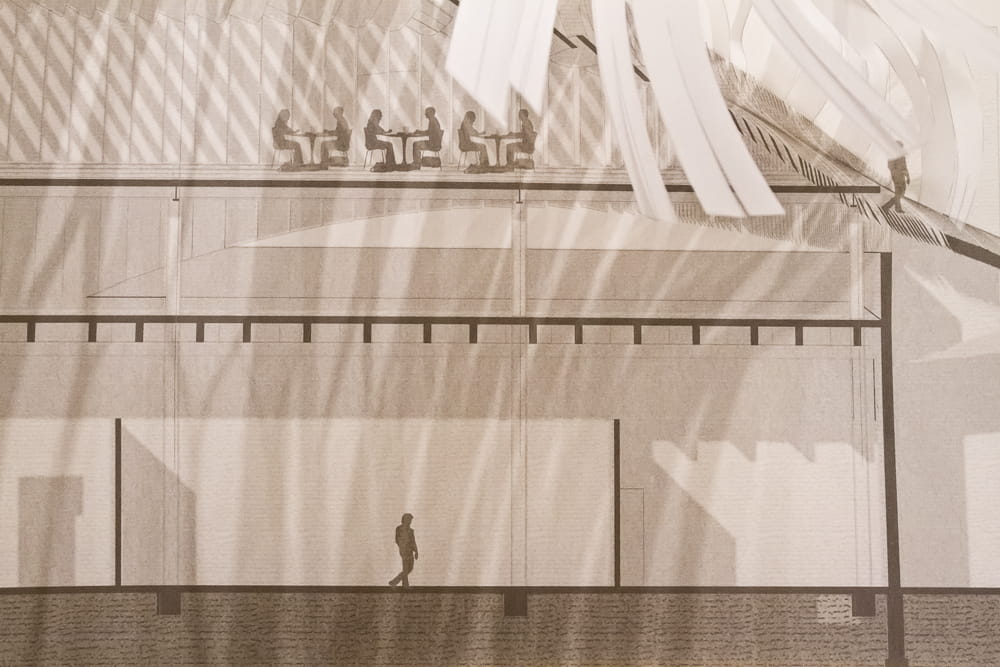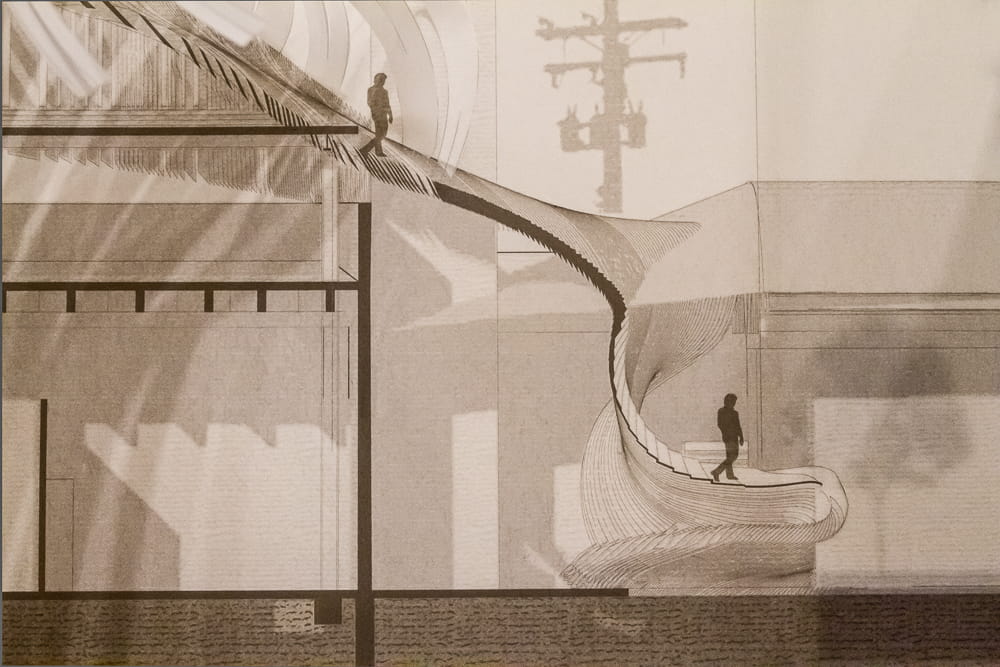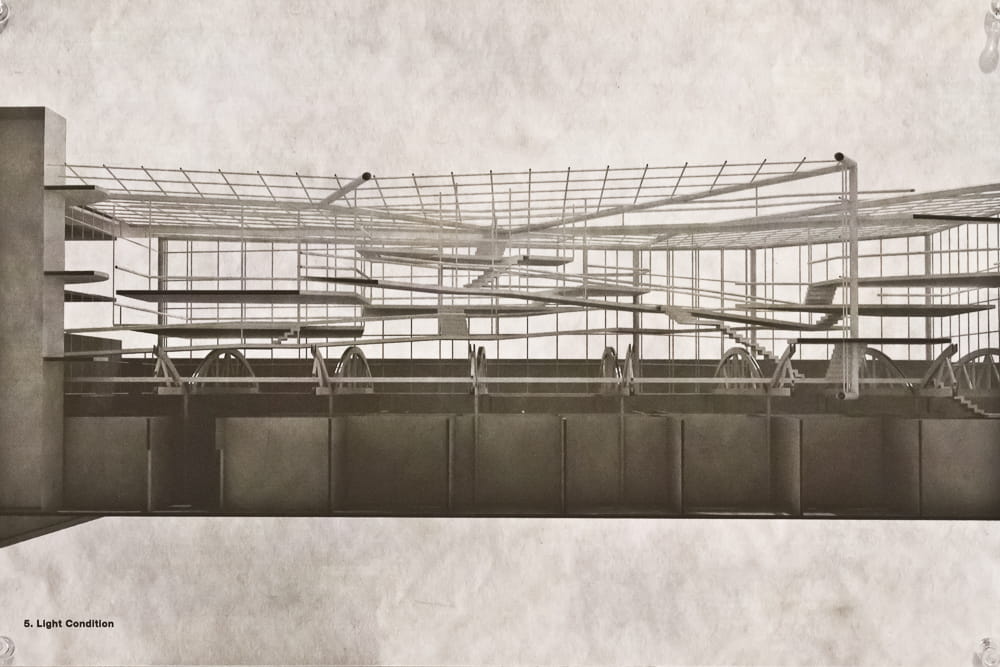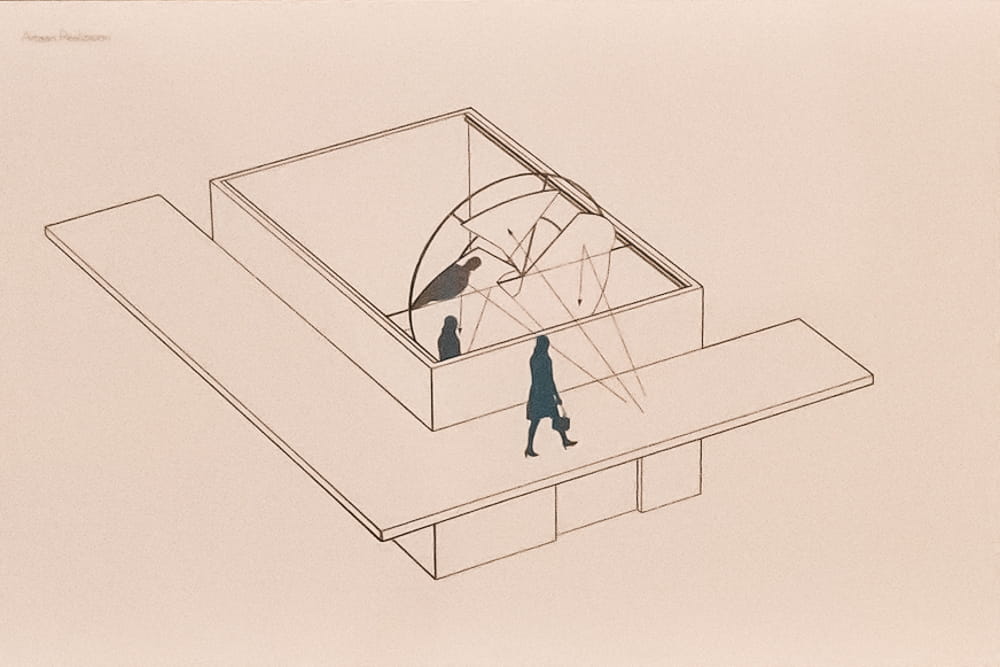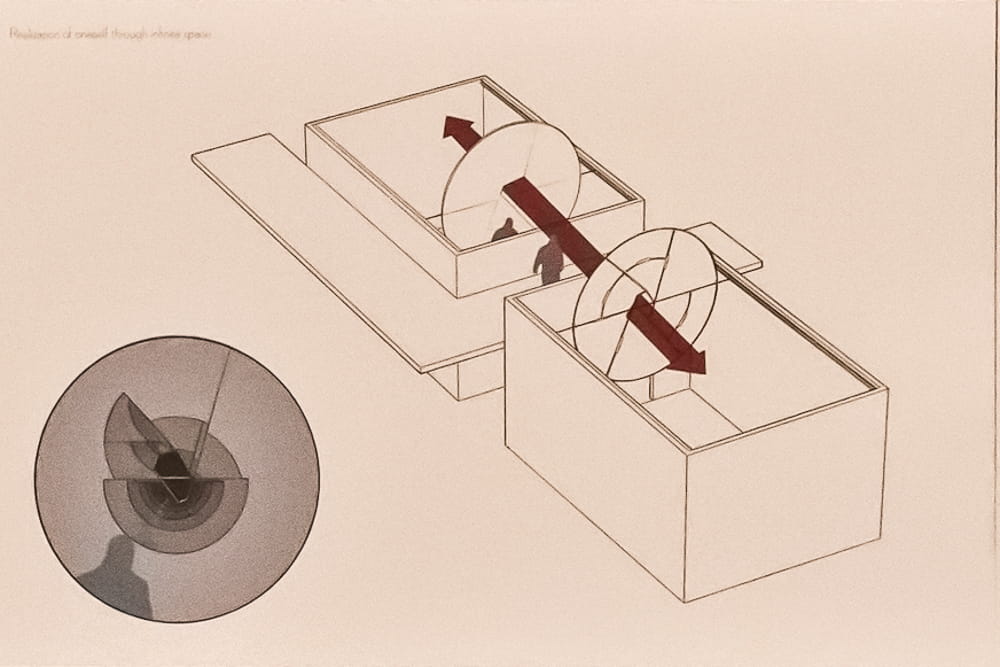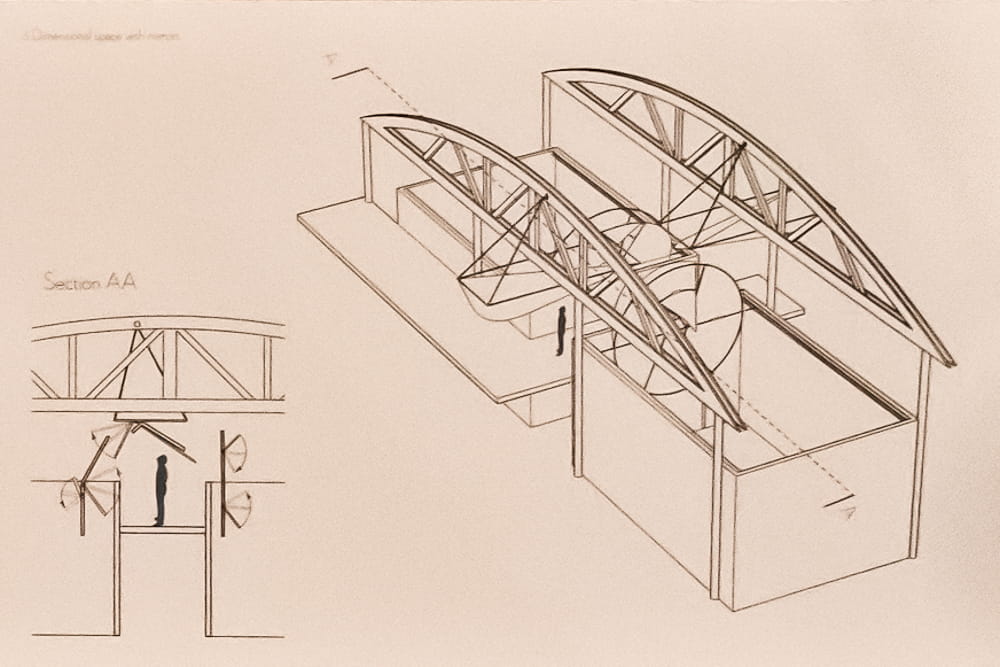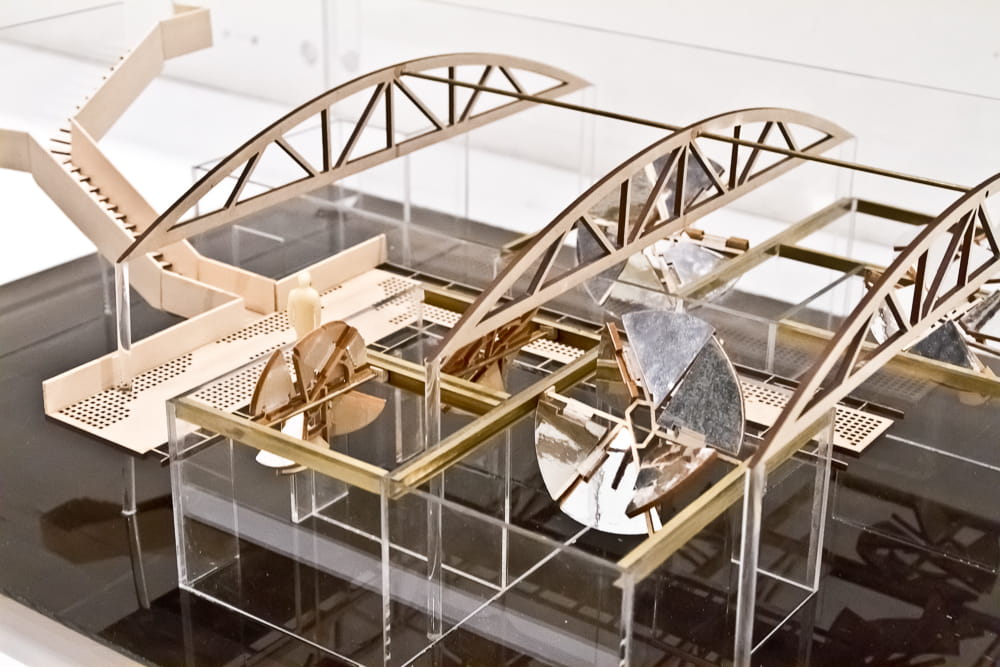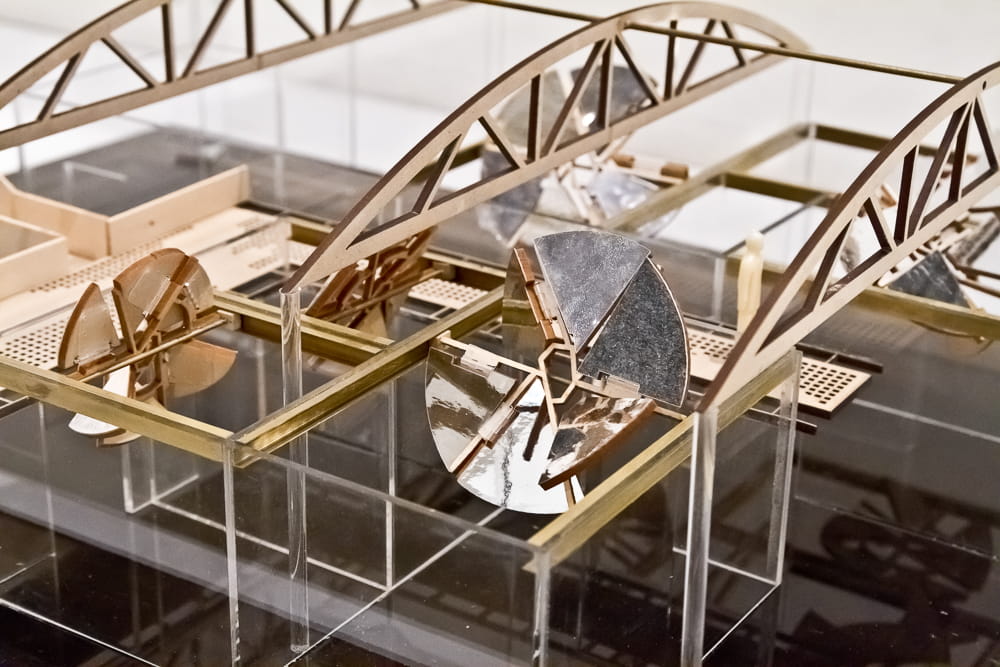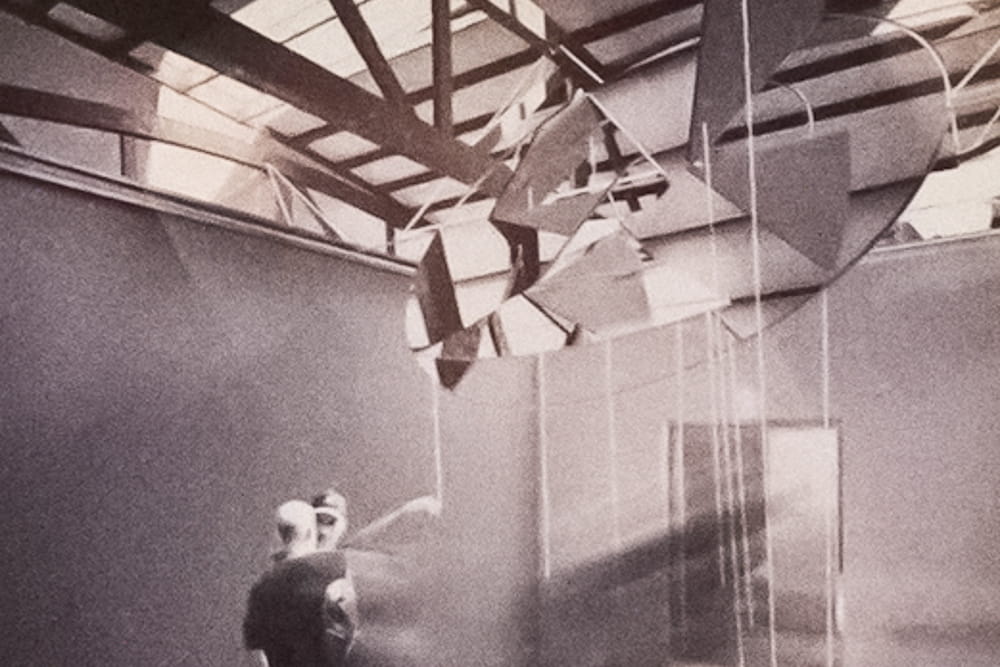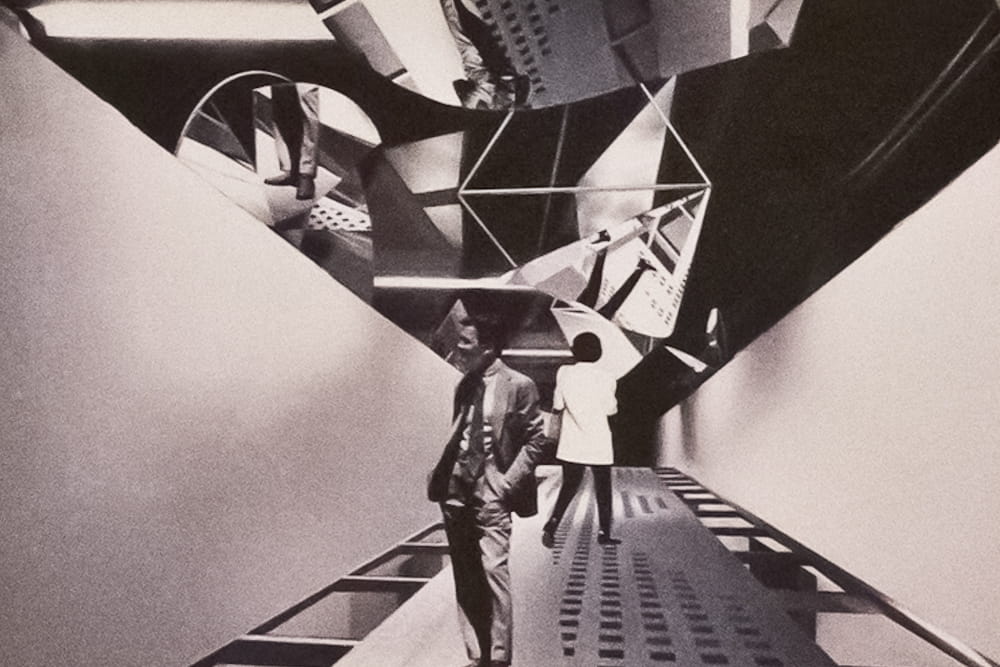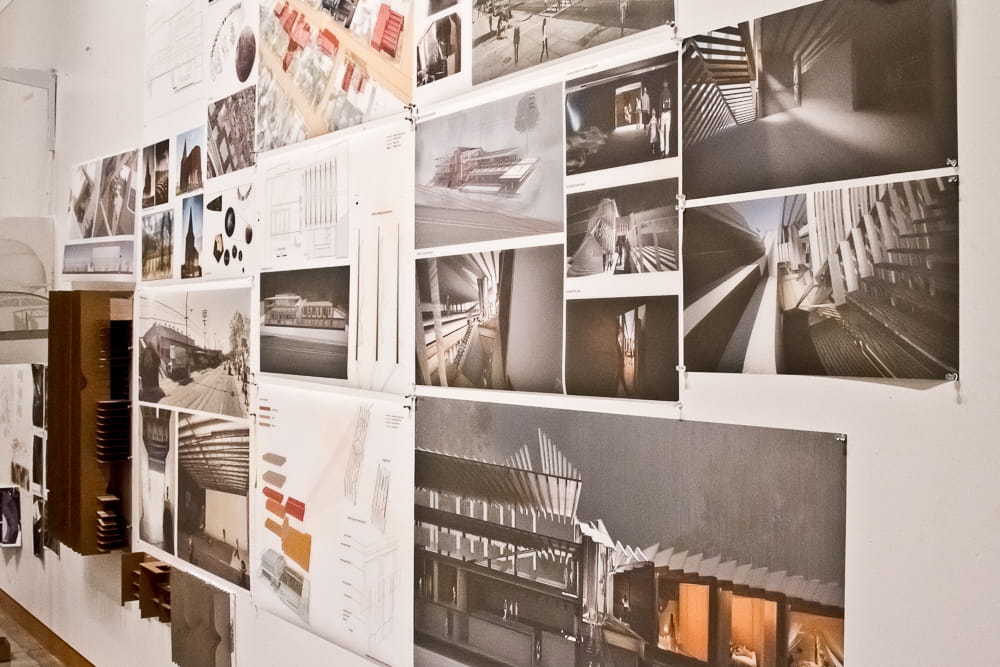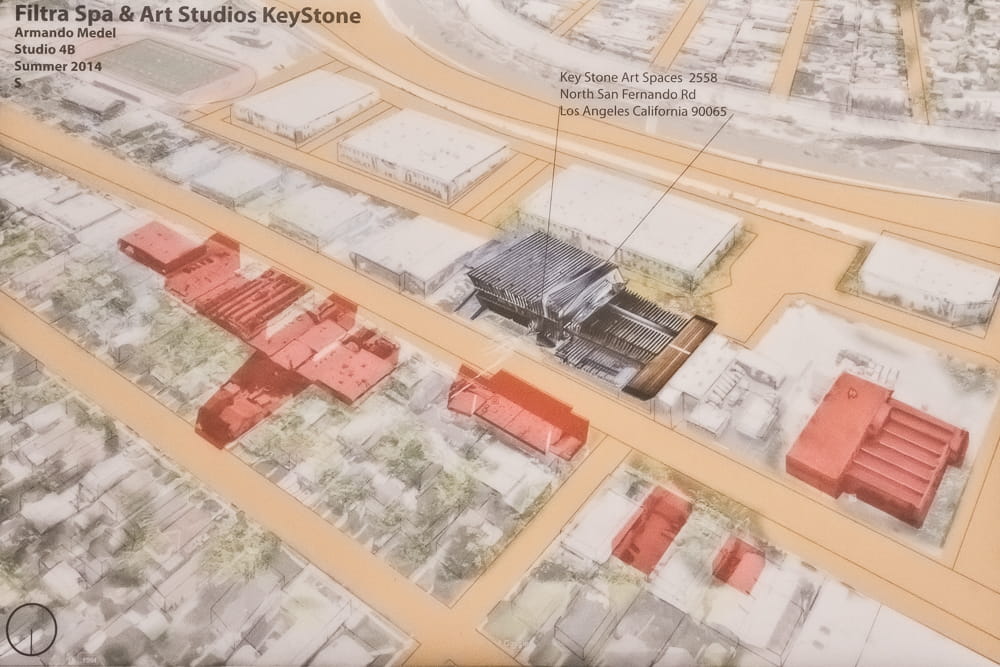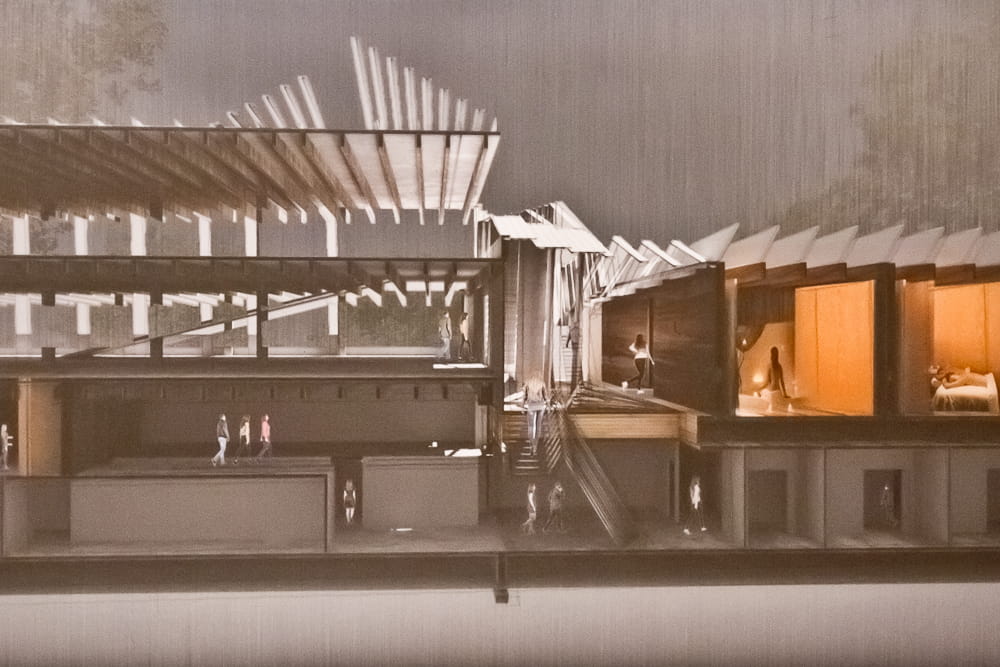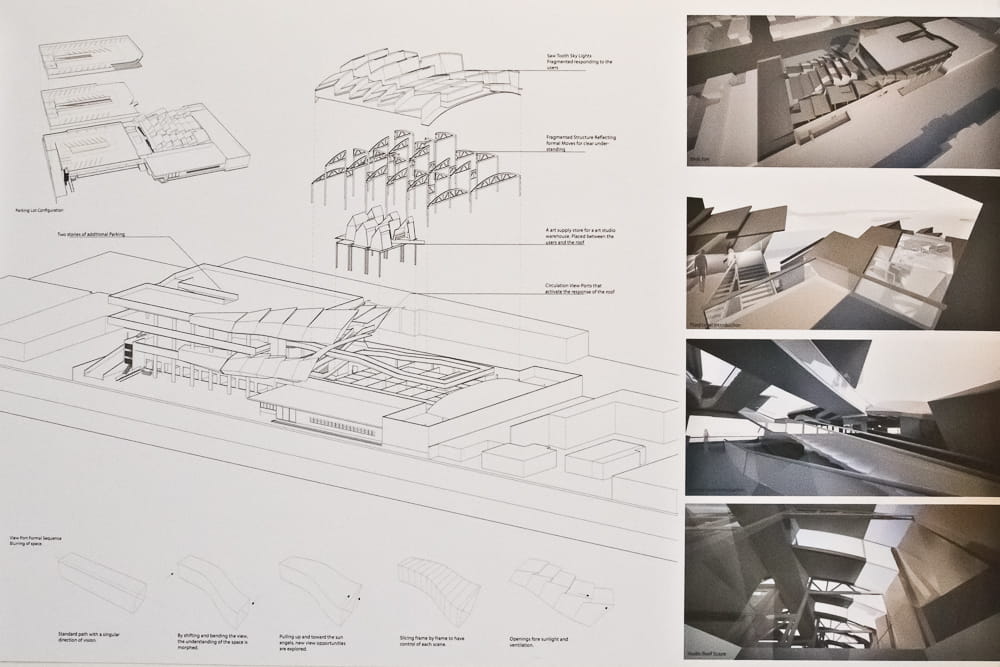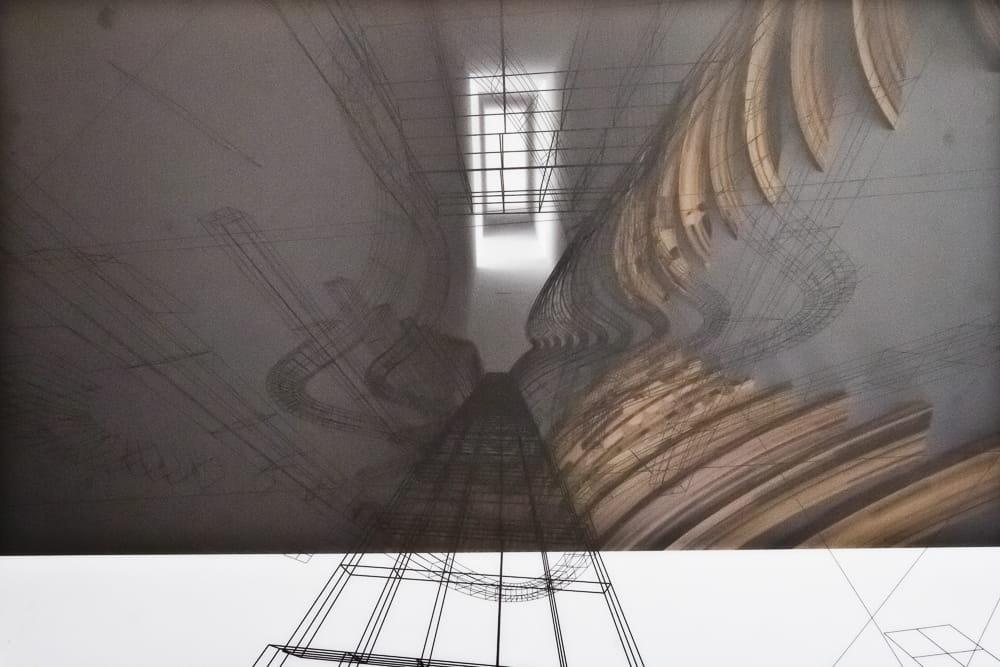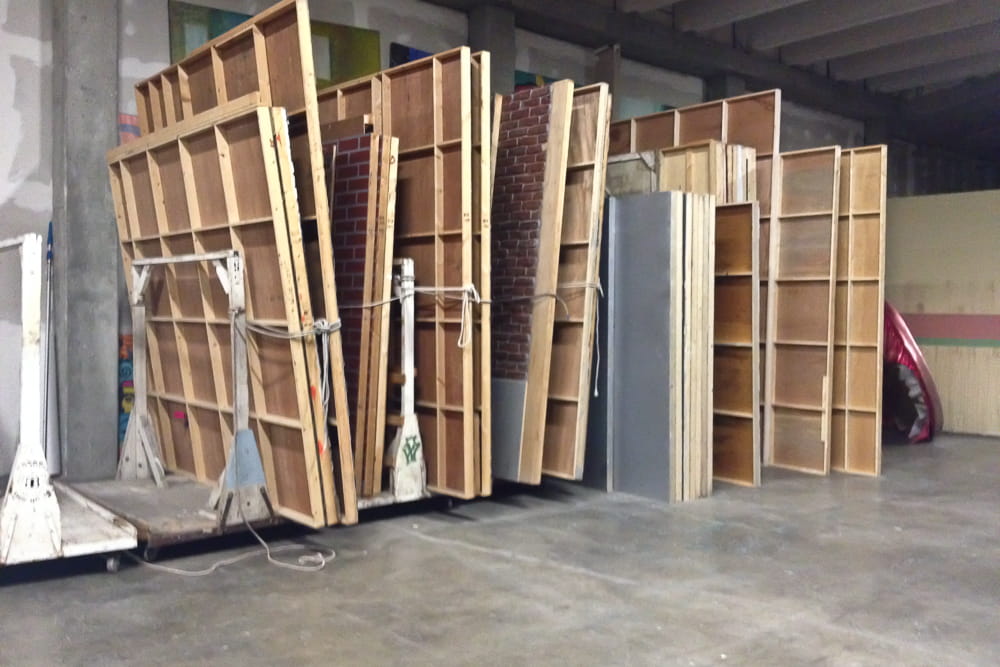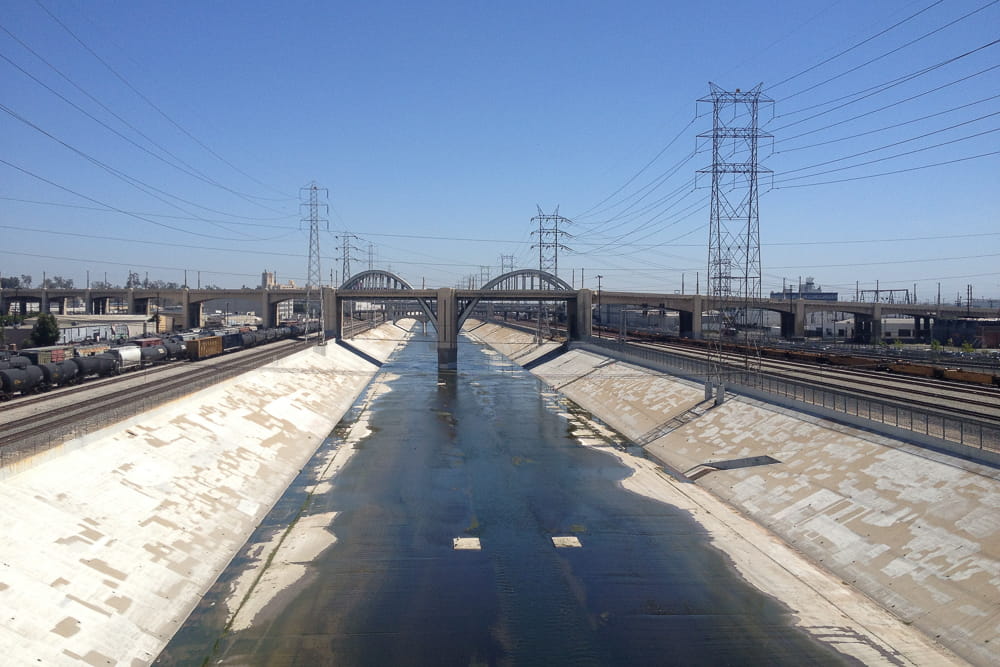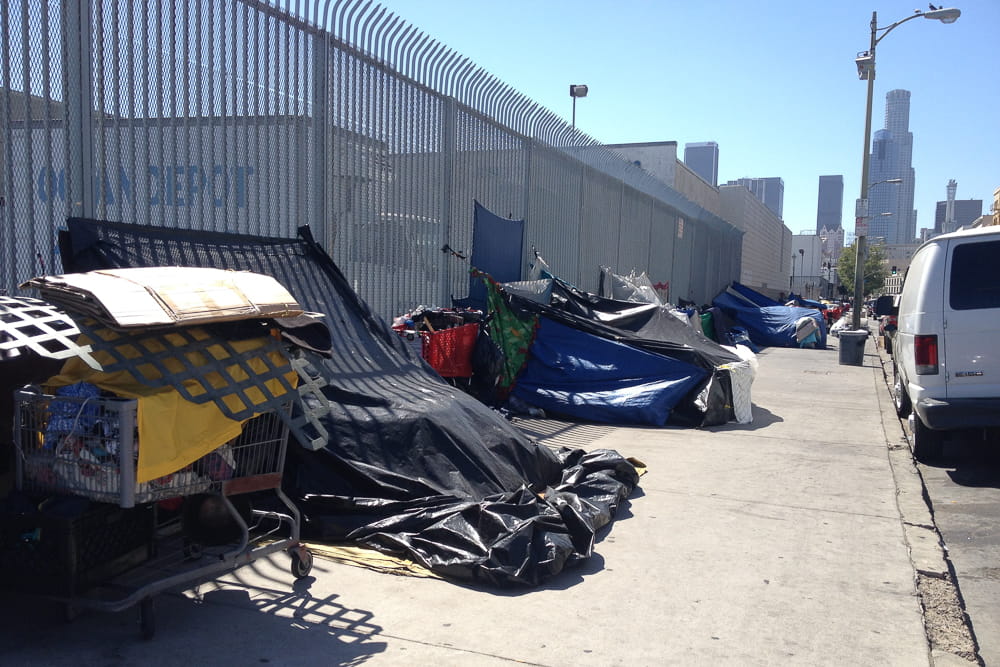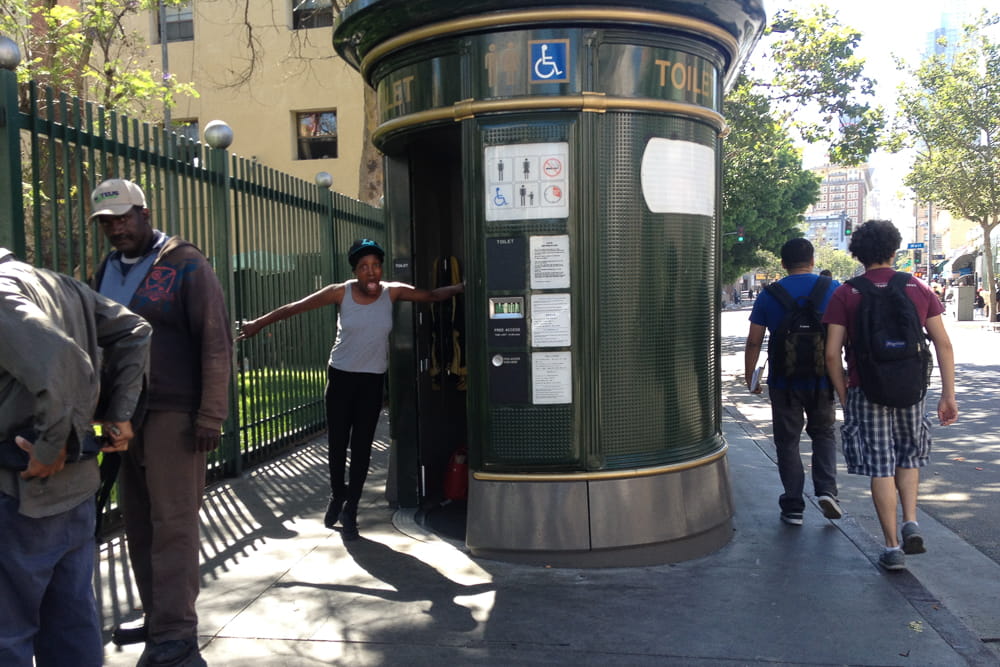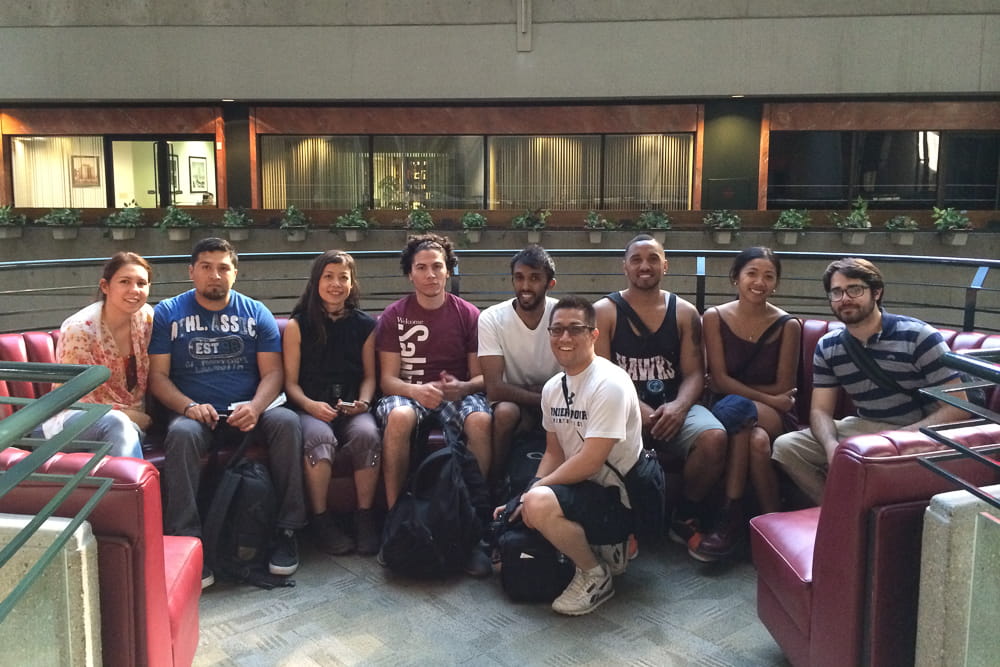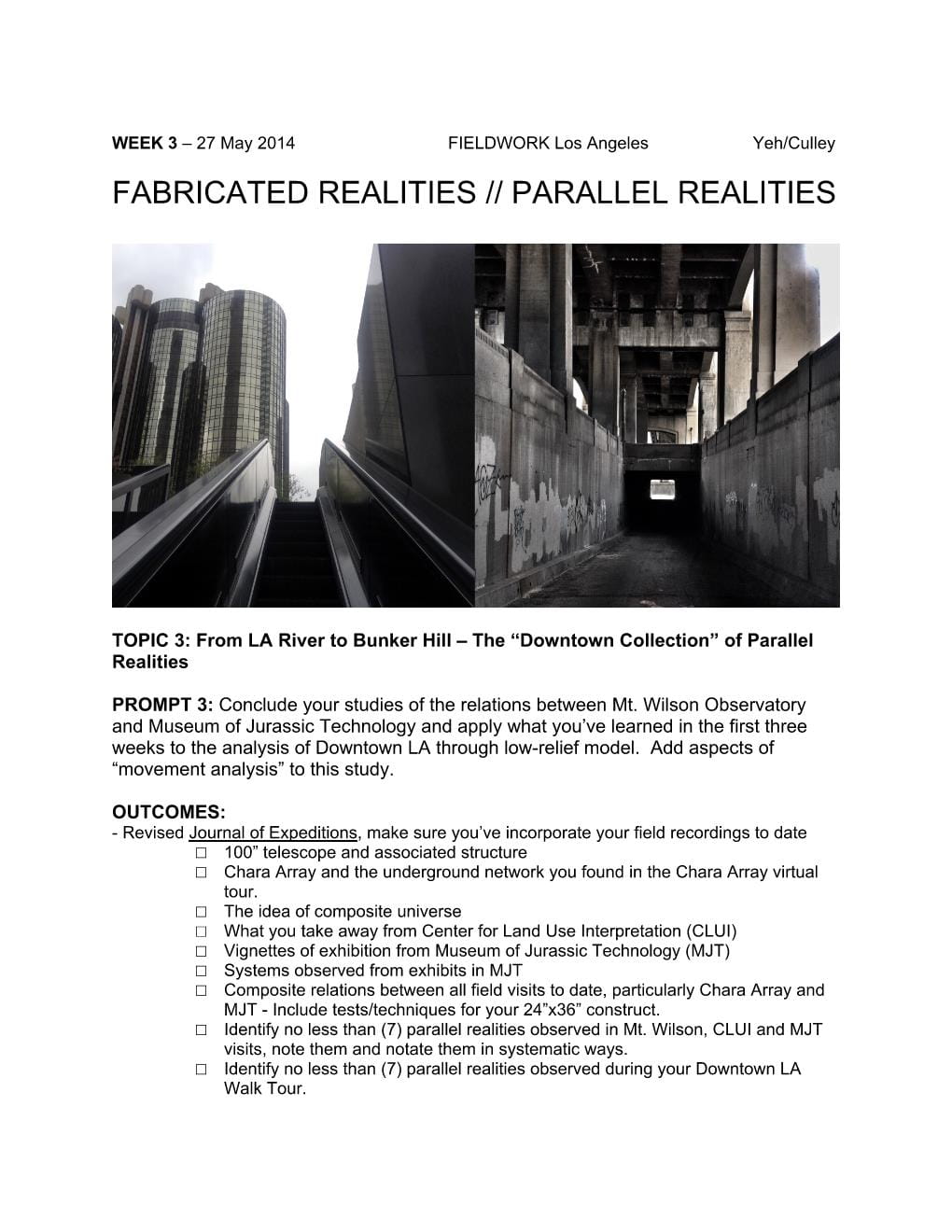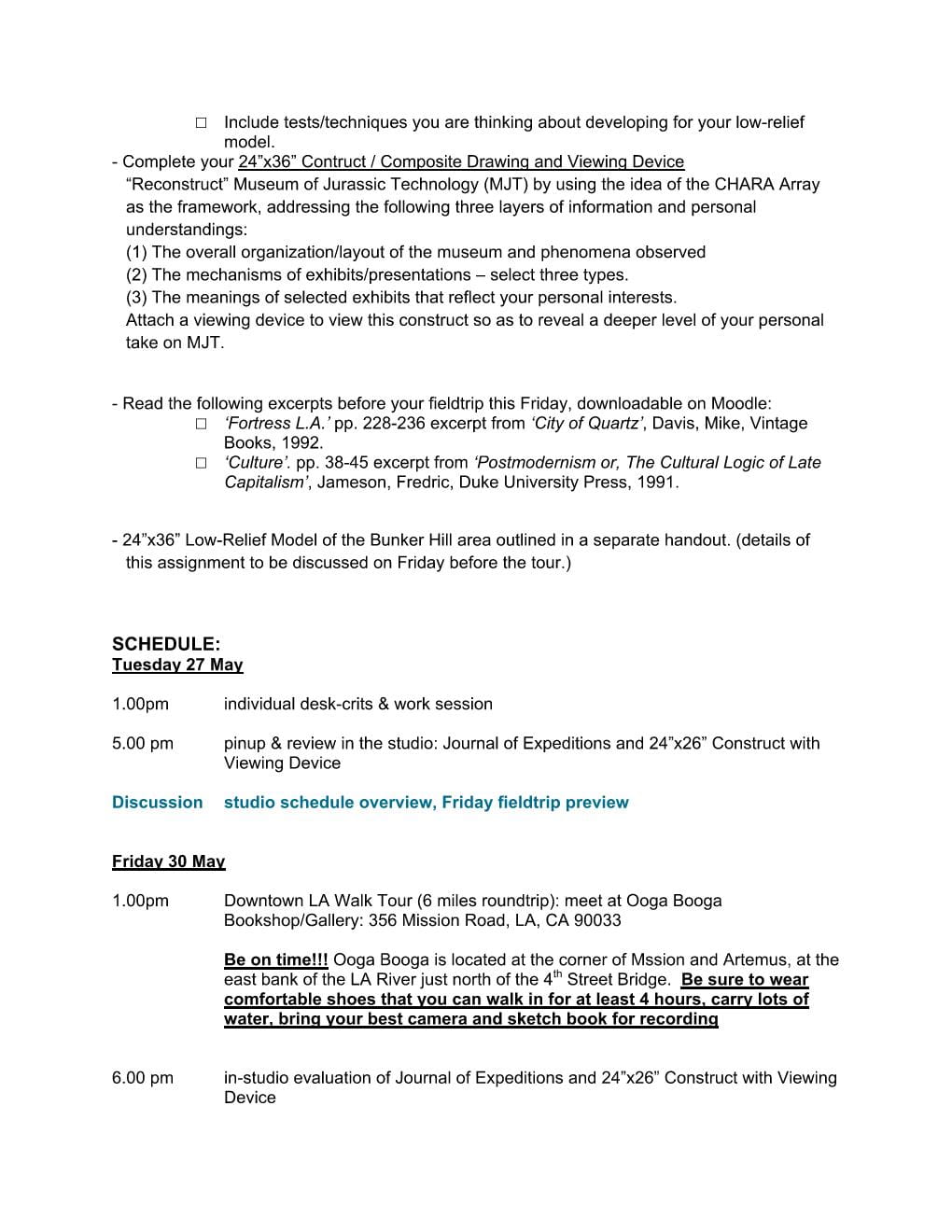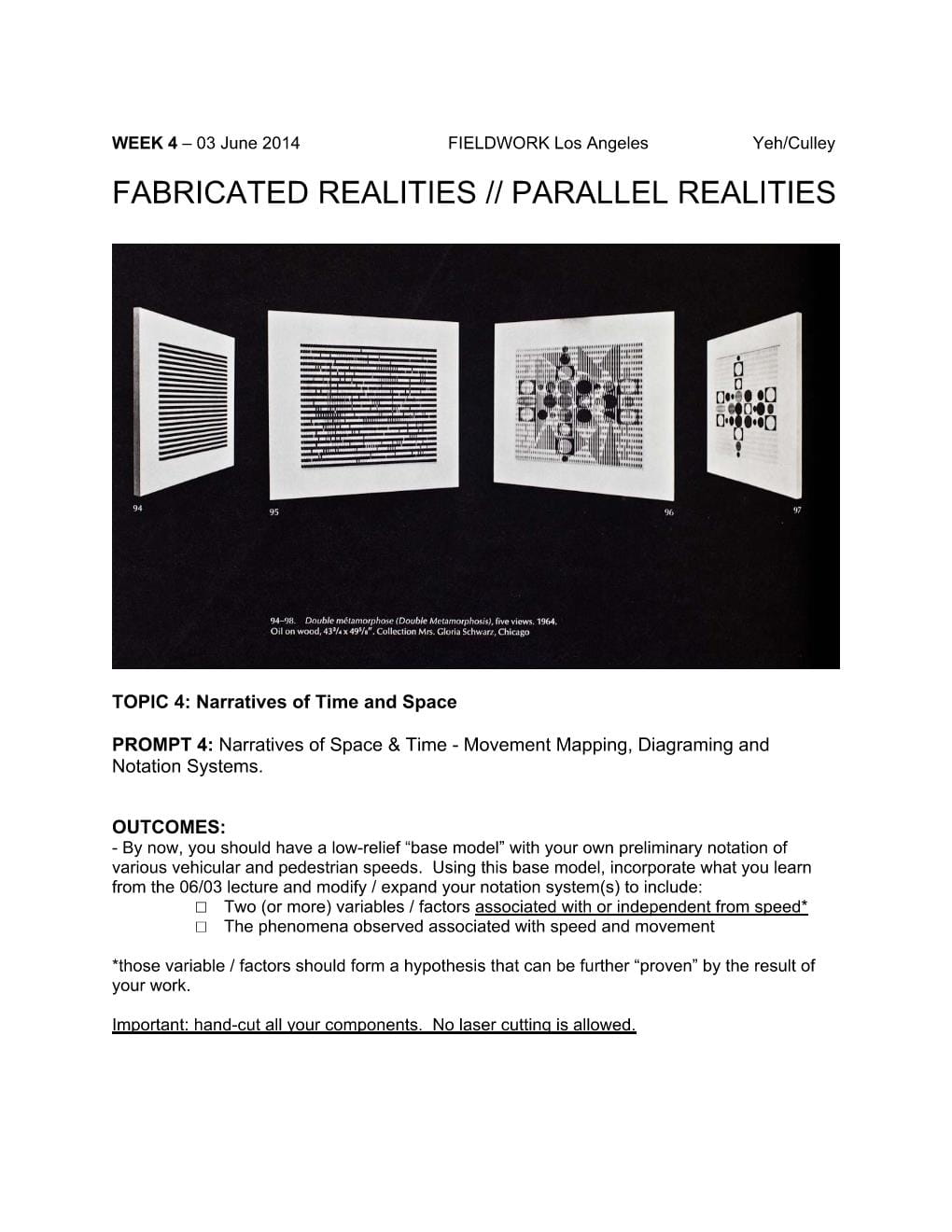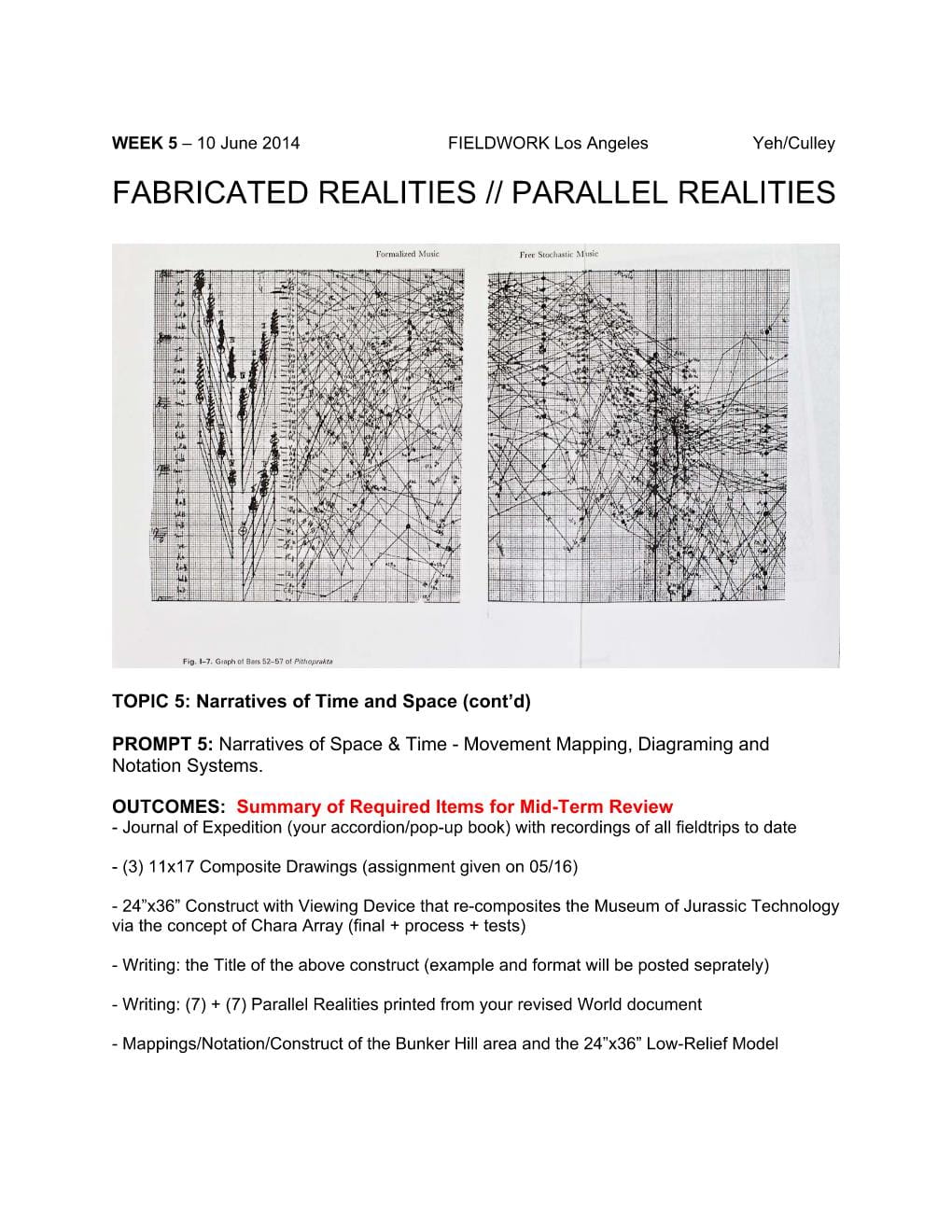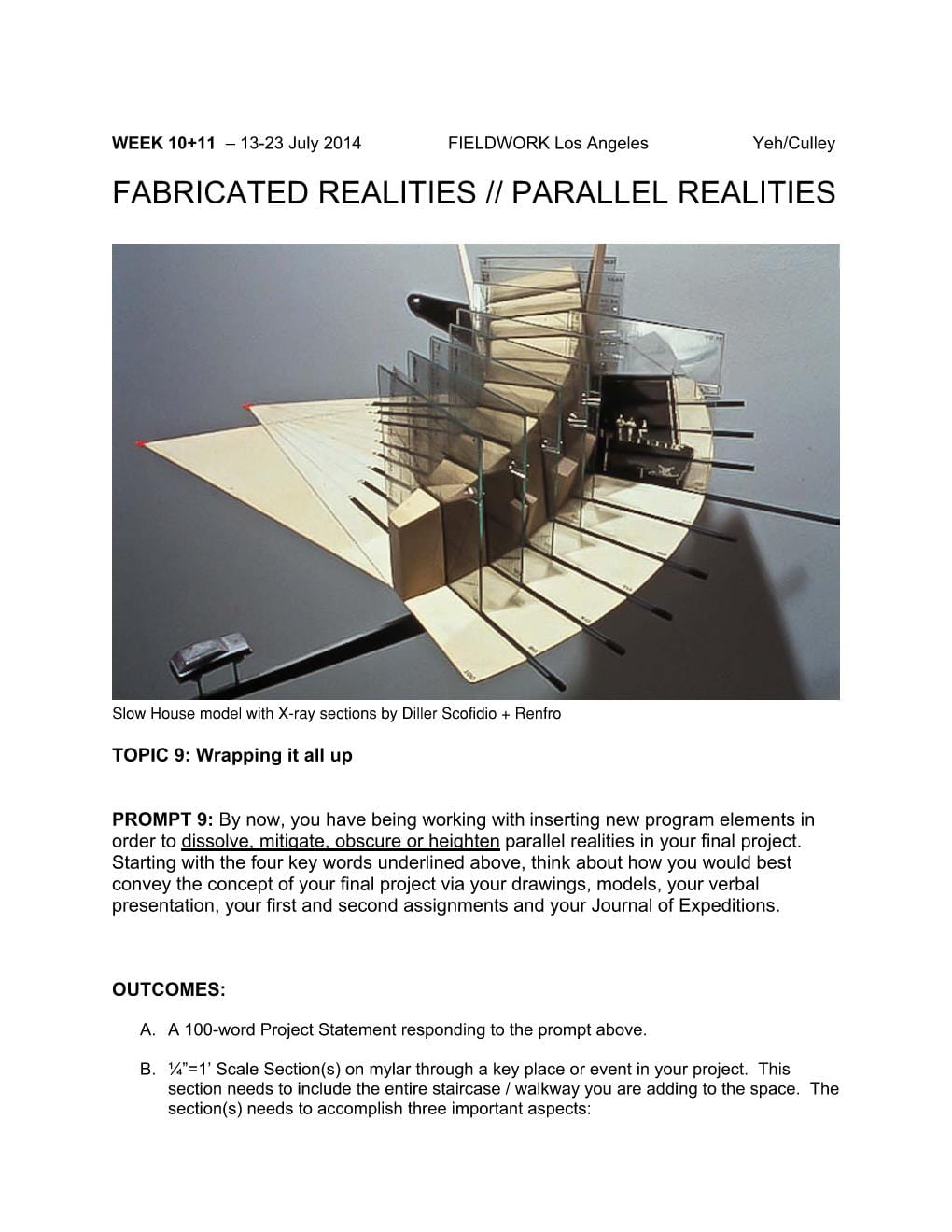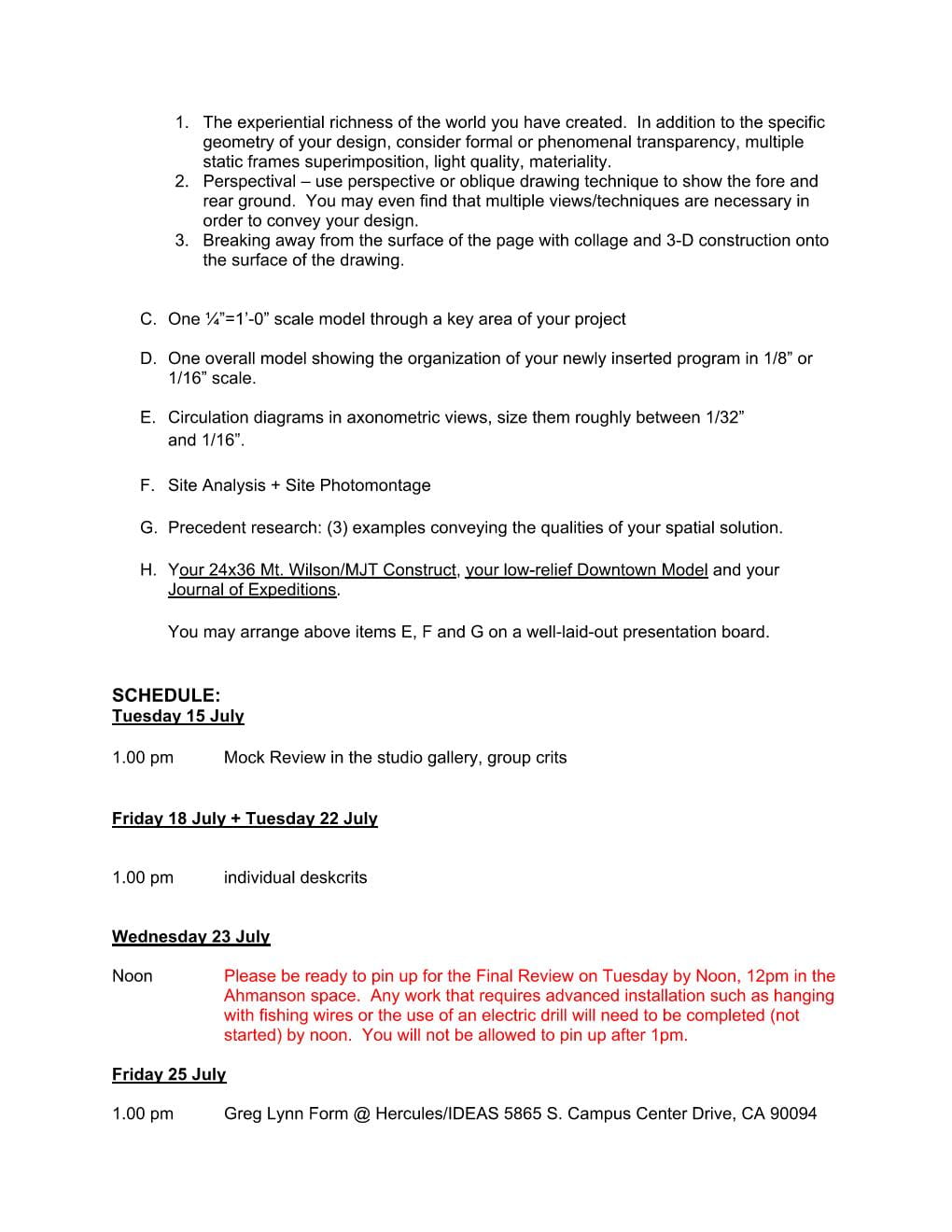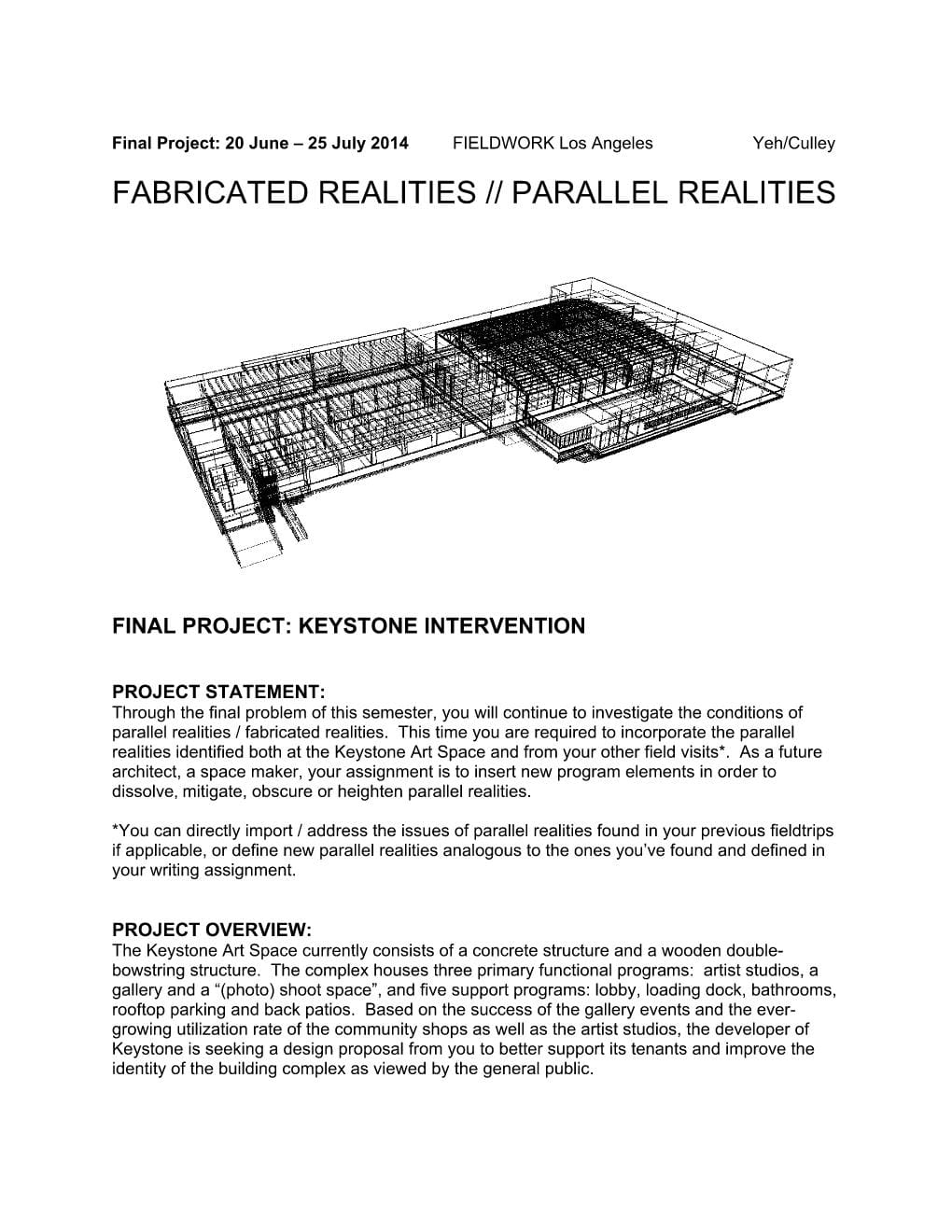Fieldwork LA 2014
Fieldwork LA is a grad and undergrad studio offered to Woodbury’s architecture students to bridge the analytical work of the core sequence with the synthetic work of the final year. The Summer 2014 rendition of Fieldwork LA was titled Parallel Reality//Fabricated Reality, suggesting conditions readily found in Los Angeles to be analyzed and recreated by this studio.
Los Angeles is renowned among tourists for its film & entertainment industry, movie studios, and theme parks— icons of fabricated realities. However, the city is equally known to its residents for its large immigrant population, significant wealth disparity, and rich racial, social, and cultural diversity— parallel realities. With these contrasting realities in mind, the studio aimed to deepen its understanding by visiting fieldwork locations that quietly embody both conditions. There were a total of six field trips, with four highlighted below:
Mt. Wilson Observatory/CHARRAY Array
Founded in 1904, Mt. Wilson Observatory was where Edwin Hubble observed the phenomenon of the ever-expanding universe using the 100-inch Hooker Telescope, a pivotal discovery in astrophysics in 1929. In 2004, an optical interferometric of six telescopes, CHARA Array, was installed on Mt Wilson by George State University due to the site’s exceptional seeing conditions. The telescopes, each with a light-collecting mirror one meter in diameter, are dispersed over the mountain to provide a two-dimensional layout that enables the resolution of a single telescope with a mirror sized a fifth of a mile in diameter, putting Mount Wilson back on the cutting edge of astrophysics.
It is essential to understand the science behind CHARA Array to understand its relevance to this studio: The light from the individual telescopes is conveyed through vacuum tubes to a central Beam Synthesis Facility where the six beams are combined. The individual beams are calibrated to arrive at the same time by computer-controlled equipment moving on rails, tracking the earth’s rotation and the relative distances of the six telescopes to the distant stars. This allows the composite light data to reach an accuracy of less than one micron to achieve exceptionally high angular resolution. The Mt. Wilson site represents its historical significance in the way our understanding of the universe was revolutionized, and the CHARA Array’s synthesis of light data points to “fabricated reality”.
Museum of Jurassic Technology (MJT) & Center for Land Use Interpretation (CLUI)
Founded in 1988, the Museum of Jurassic Technology is a unique institution that defies traditional museums by offering a blend of facts, fictions, and the surreal, creating an experience that challenges visitors’ perceptions of knowledge and reality.
MJT’s “Letters to Mt. Wilson” is one of its poignant and thought-provoking permanent exhibits. The room showcases a selection of letters sent by ordinary people from around the world to the observatory, addressing a wide range of subjects, from personal theories about the cosmos to questions about the universe and requests for scientific validation. This installation explores the intersection of science, communication, and the human experience, drawing upon the historical significance of Mt. Wilson Observatory in the history of astronomy and astrophysics.
Center for Land Use Interpretation (CLUI) is an innovative and thought-provoking organization dedicated to exploring and understanding how land in the United States is utilized, developed, and perceived. Founded in 1994, CLUI operates as a research and educational organization that blends elements of art, geography, and urban planning to examine the often-overlooked aspects of the built environment.
Cydwoq Shoes Factory
Cydwoq (pronounced “Sidewalk”) is a boutique international shoe brand known for its limitedly produced, handcrafted footwear, designed and produced in Burbank, California. The company was founded by Rafi Balouzian in the mid-1990s. Drawing inspiration from ancient civilizations, Balouzian aimed to create shoes that are both aesthetically revolutionary and ergonomically sound, reflecting a blend of modern design and timeless craftsmanship.
Having the largest population of Armenians in exile from the former Soviet Union, Iran, and Turkey, Balouzian and Cydwoq Shoes also represent the displacement of the home, culture, and professions of its population. Many Armenian professors and scientists became tradesmen due to the language barrier and loss of academic credentials after arriving in Los Angeles. A large Armenian shoemaking industry emerged out of this displacement.
Downtown LA Walk Tour
The studio embarked on this 6-mile round trip walk after a preparatory lecture inside the Ooga Booga Gallery & Bookstore on Mission Road. We crossed the freight railroads and the LA River via 4th Street Bridge, through the Artist District and Skid Row, and arrived at the Financial District/Bunker Hill. The walk provided the most intense cross-section of downtown Los Angeles, geographically, culturally and socially.
Exercises were structured to extract ideas from the field visits to gain a greater insight of Los Angeles in relation to fabricated and parallel realities. The assignments were in two parts. In Part 1, students laid the foundation for Part 2.
Part 1: Journal of Expeditions/Cabinet of Curiosities
A project brief was issued each week to identify the topic, prompts, field visit, workshop, lecture, and required outcomes to be presented the following week. A fieldwork journal, serving as a portable cabinet of curiosities, containing drawings and constructs was developed hand-in-hand with enlarged and detailed versions in response to the visits. Serving to focus personal interests, these exercises guided each student toward identifying parallel realities lodged in the cultural grain of Los Angeles.
Part 2: A Fabricated Realty for Parallel Realities
Having defined a specific area of interest, each student developed an architectural intervention to dissolve, mitigate, obscure, or heighten parallel realities.
Keystone Art Space, the project’s site for this intervention, was located on San Fernando Road, just east of the LA River and the Taylor Yard, the old central railway node in the freight network into and out of Los Angeles for Southern Pacific. Housing artist studios, Keystone Art Space was once a production facility for constructing movie sets in its previous life and still holds many large “fabricated realities”.
Work by Students:
Alejandro Ochoa, Alfredo Sanchez-Mendoza, Armando Medel, Gevork Aelian, Gregory Dulgeryan, Jose Martinez, Julius Taniguchi, Khalid Alolait, Maria Petrova, Mohamed Noamani, Sergio Legon-Talamoni, and Tamim Almahmood.



